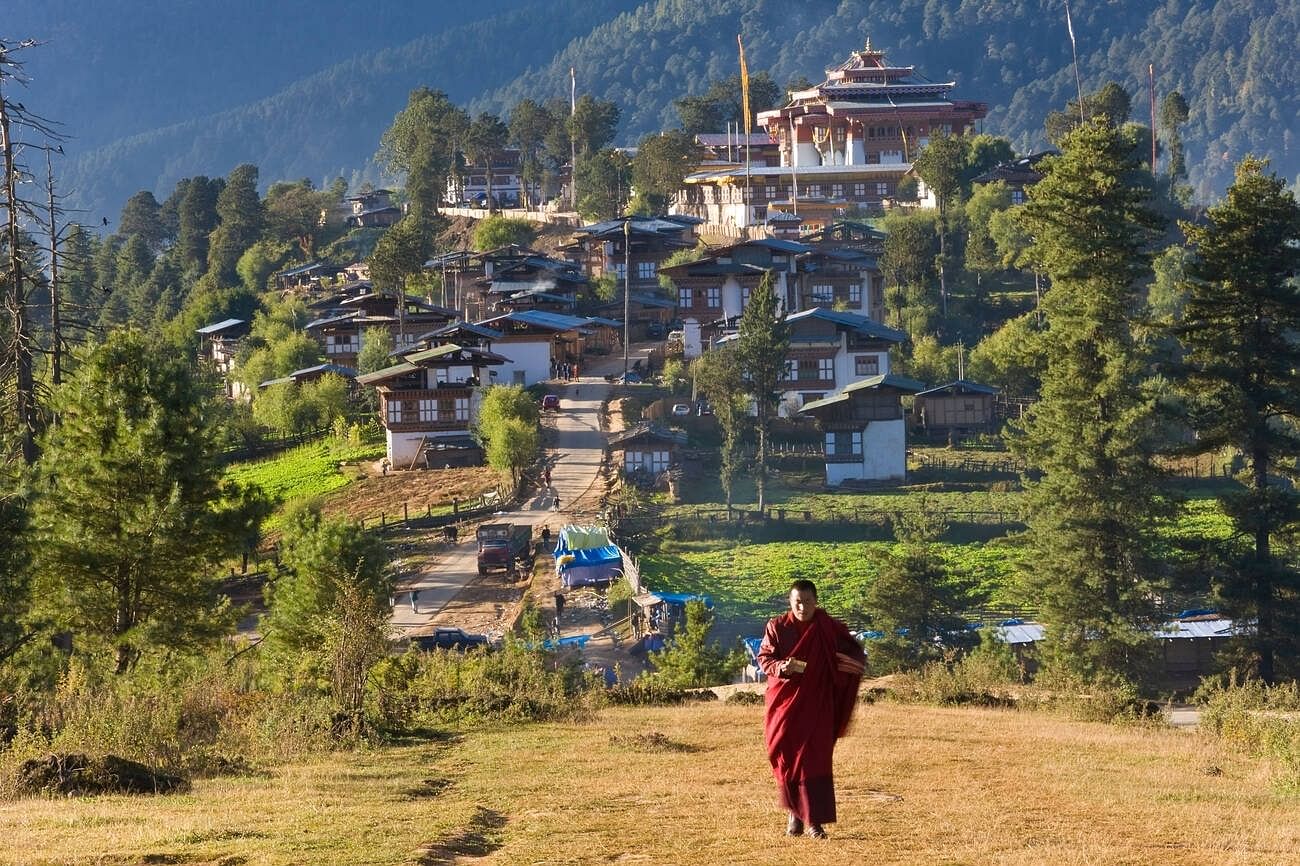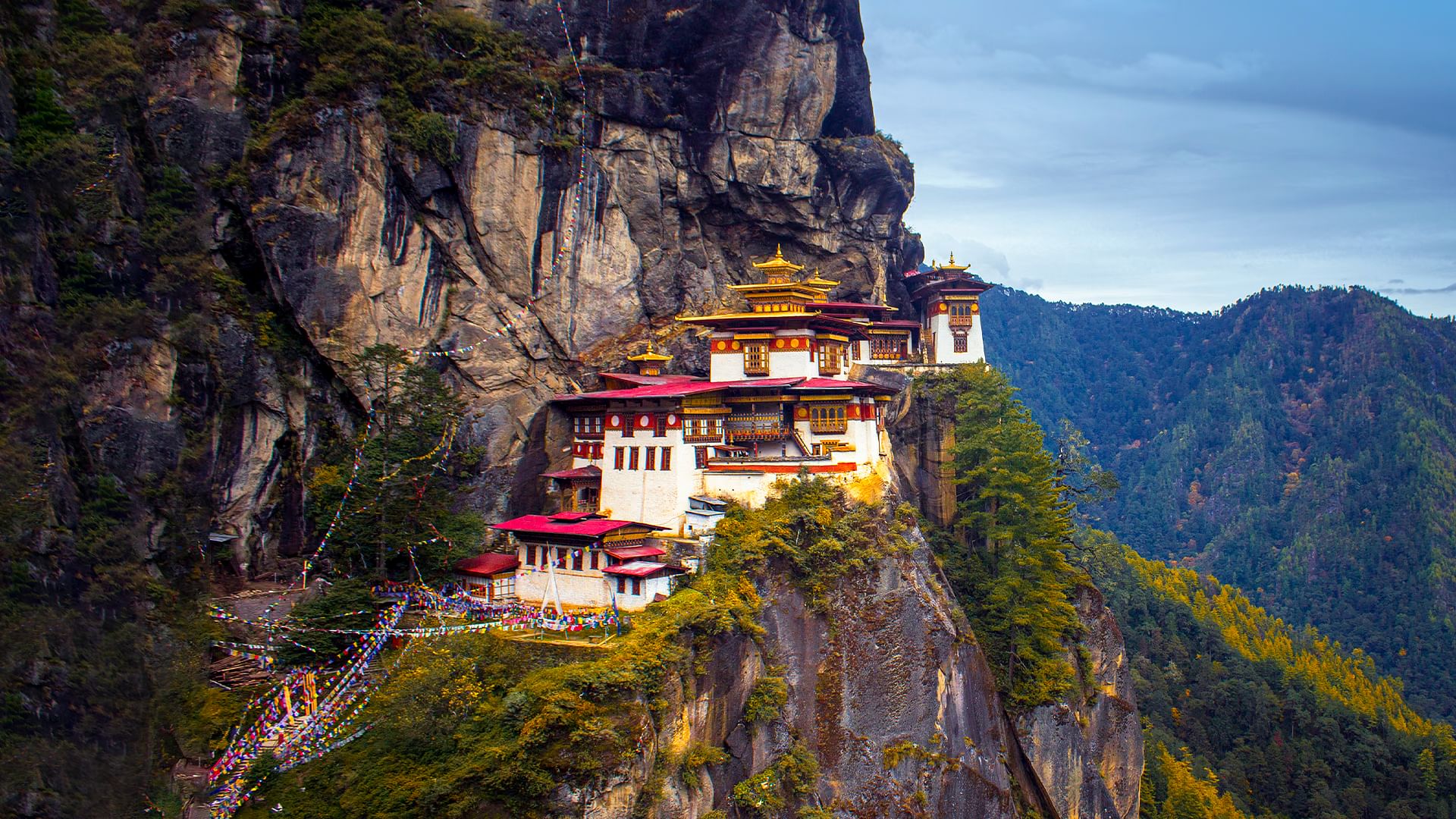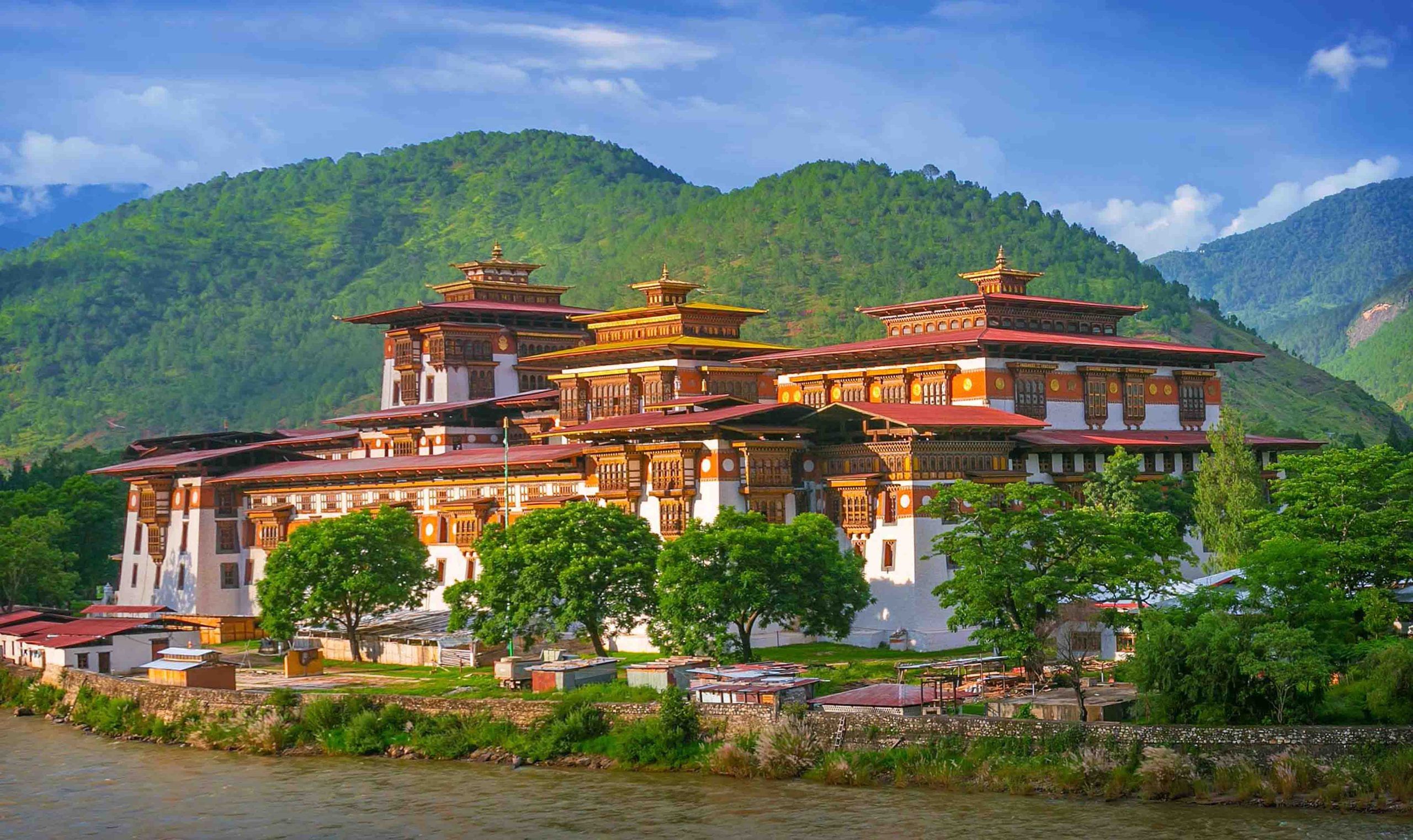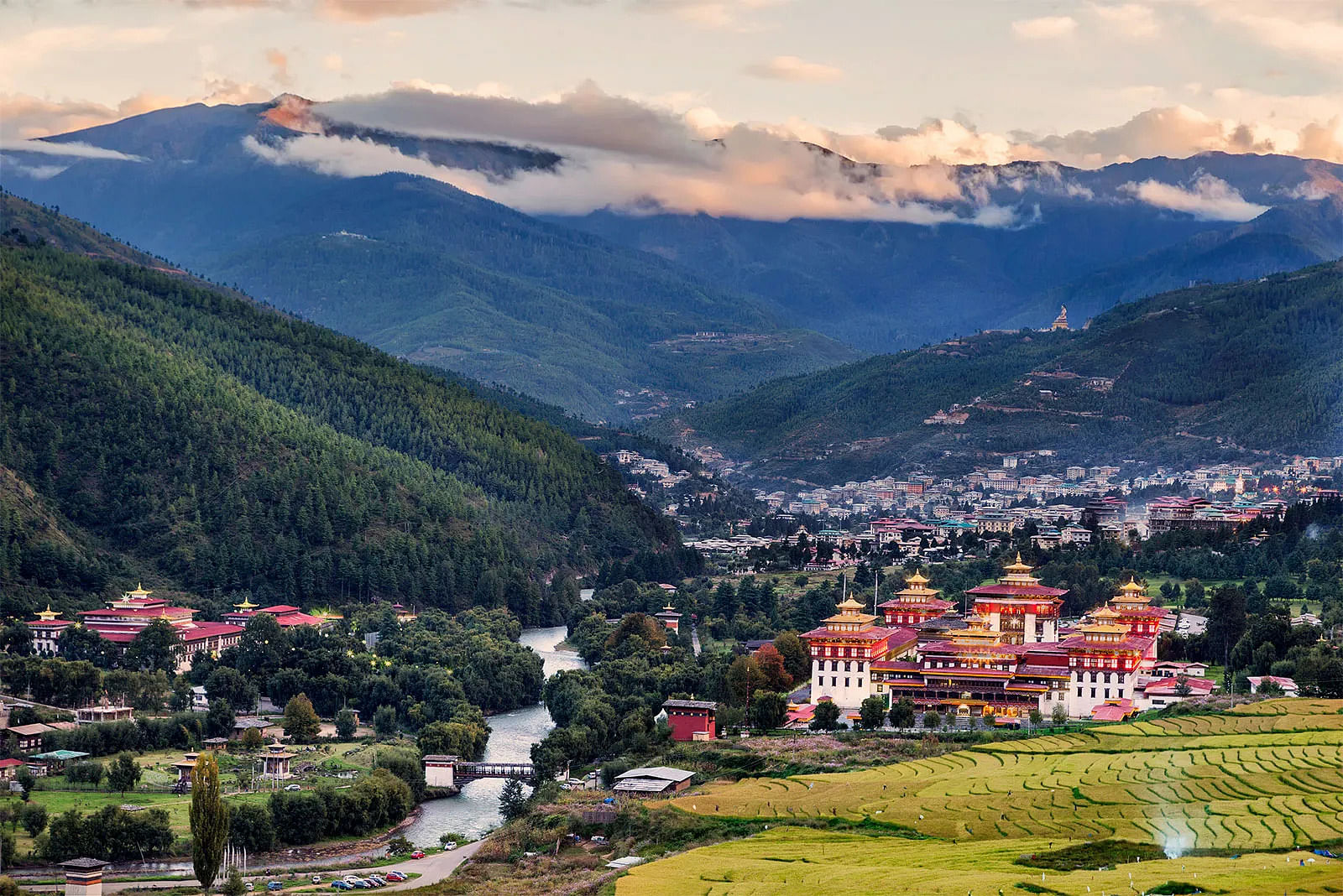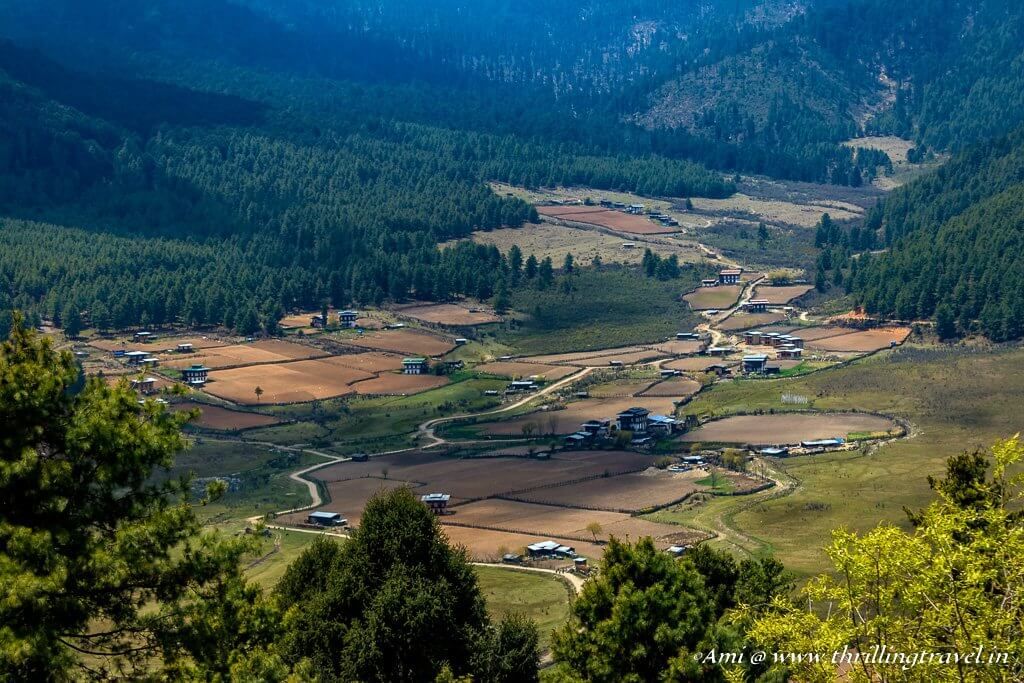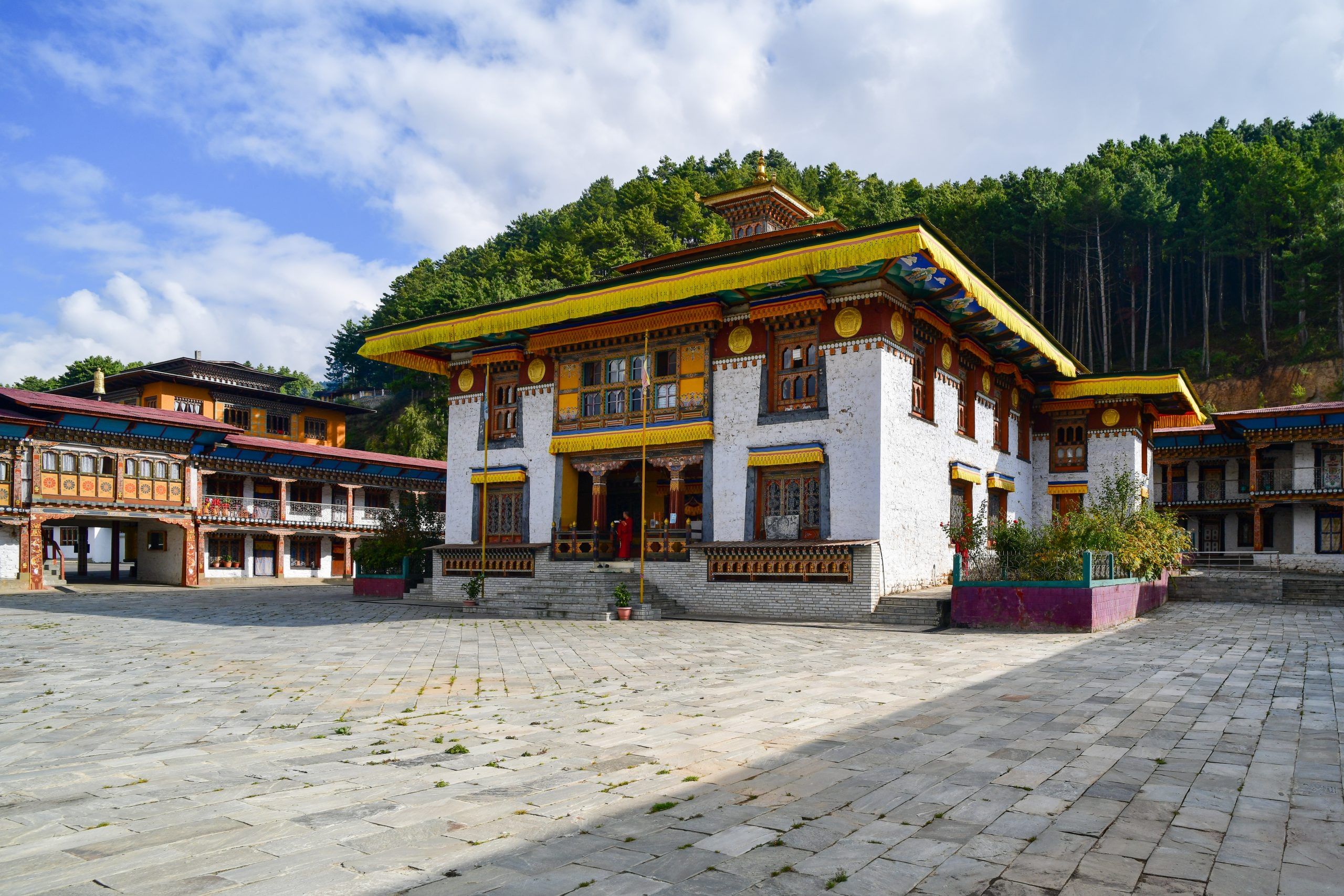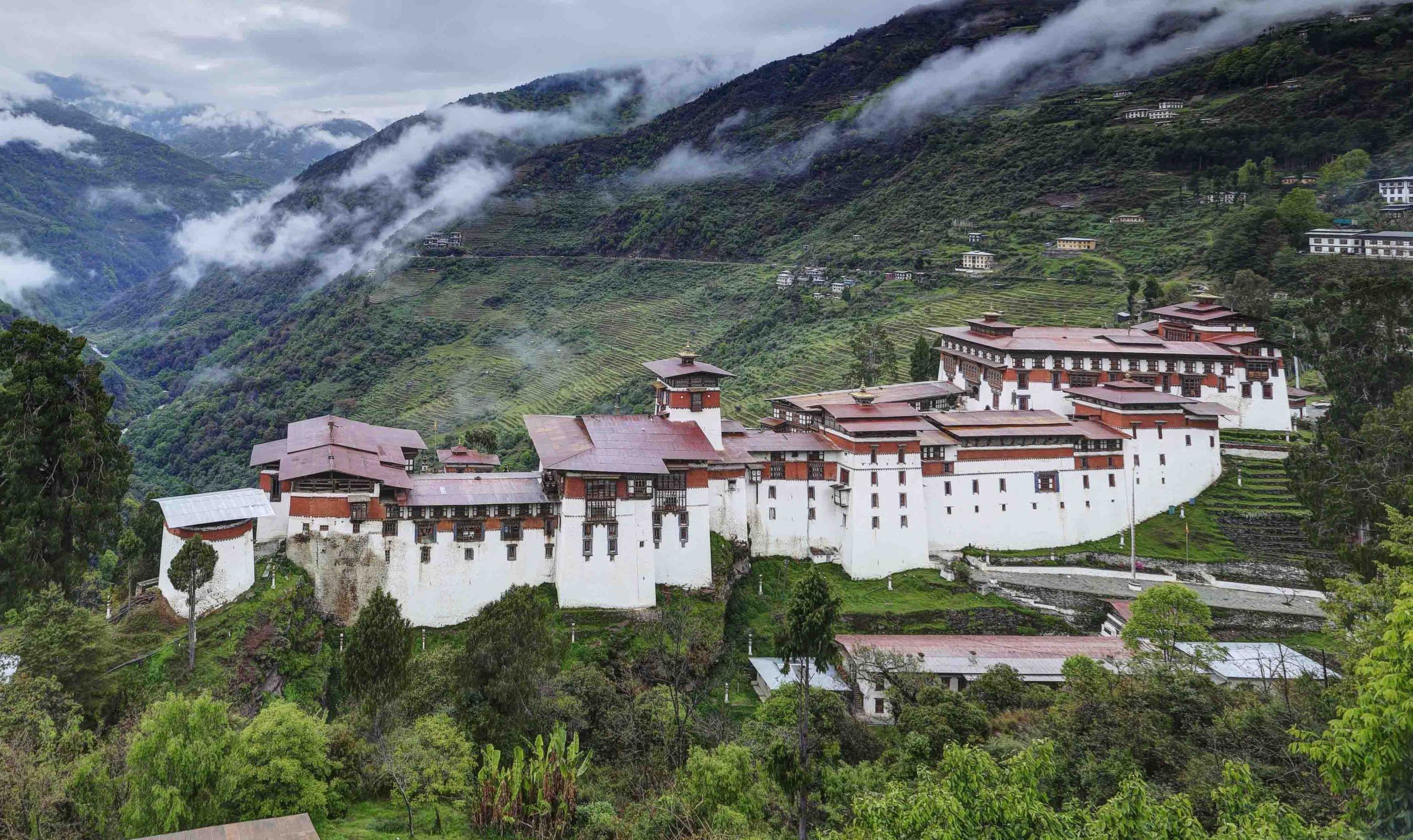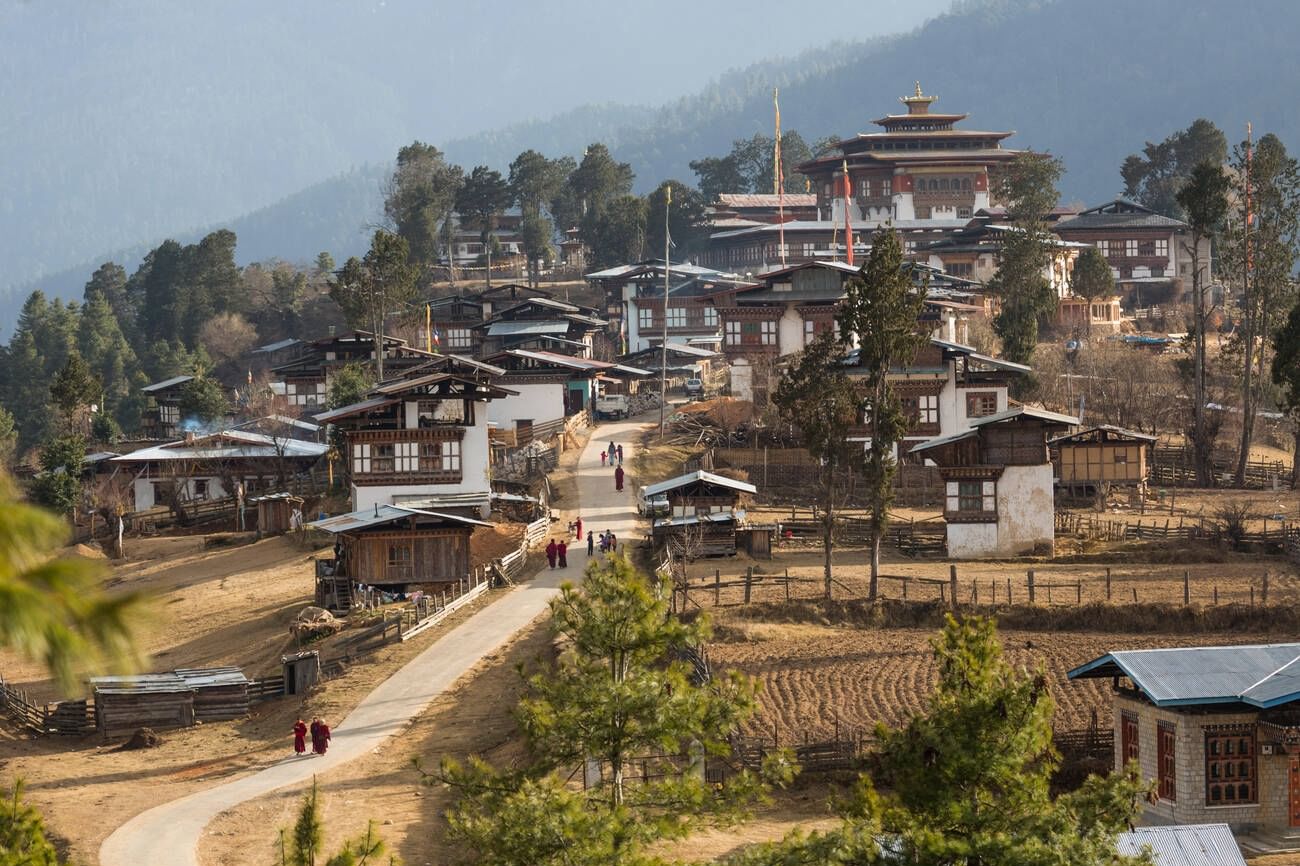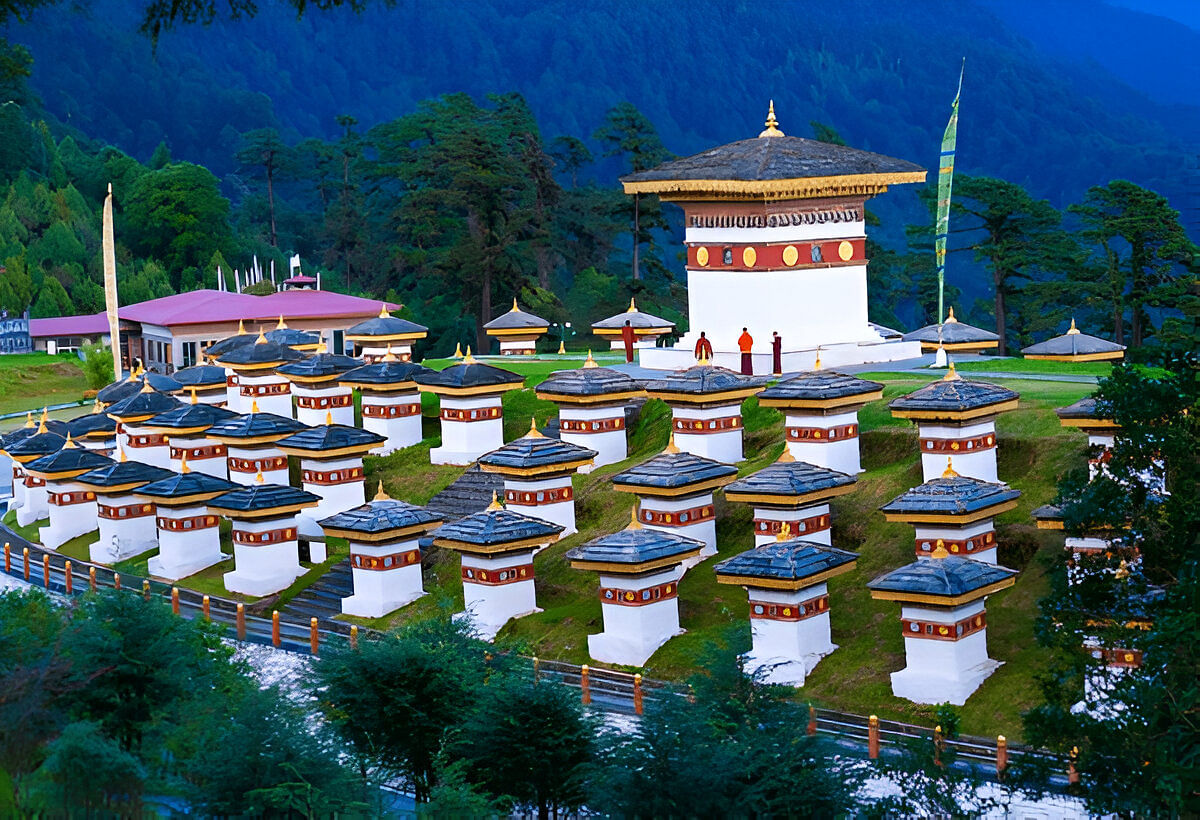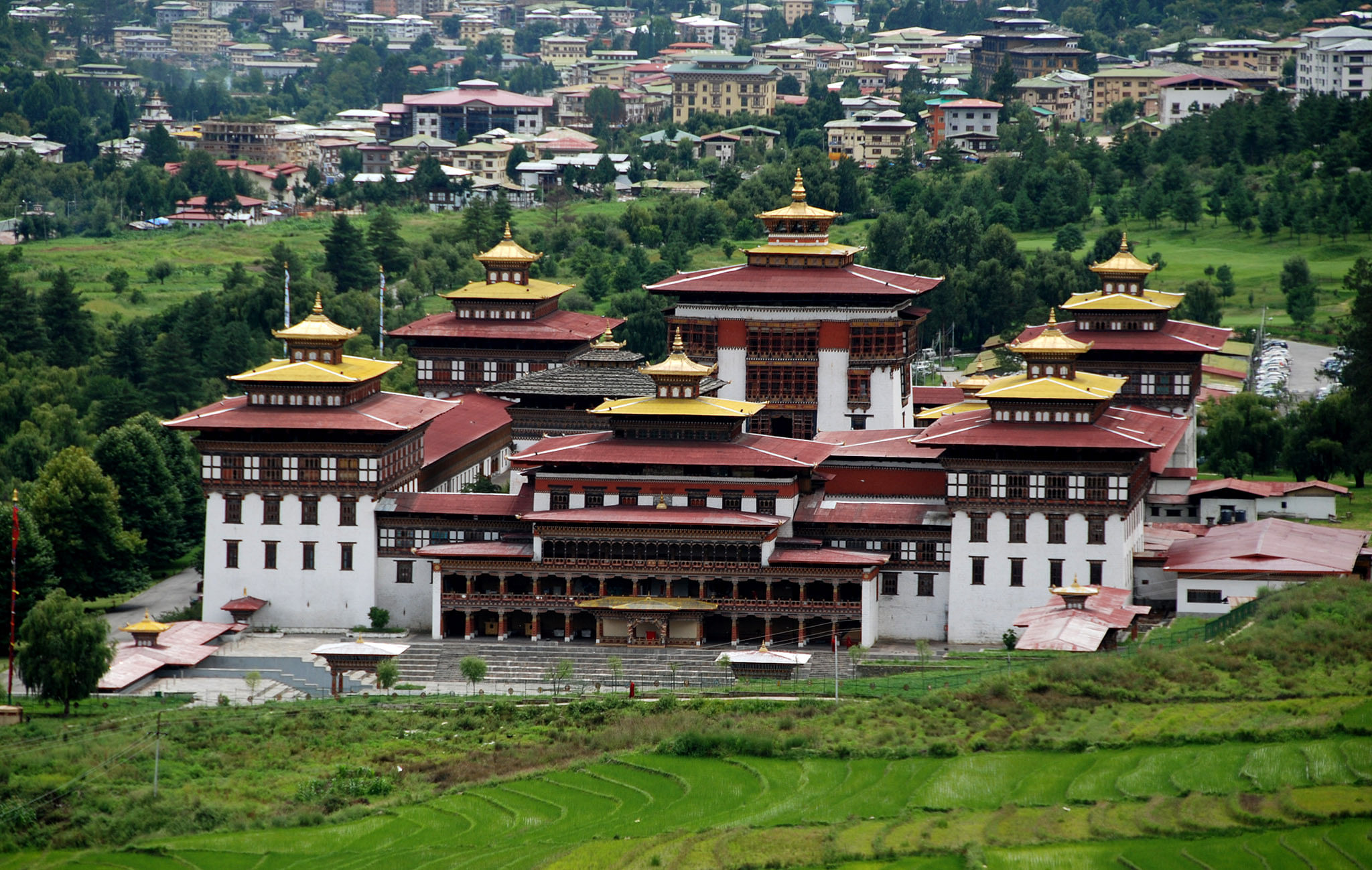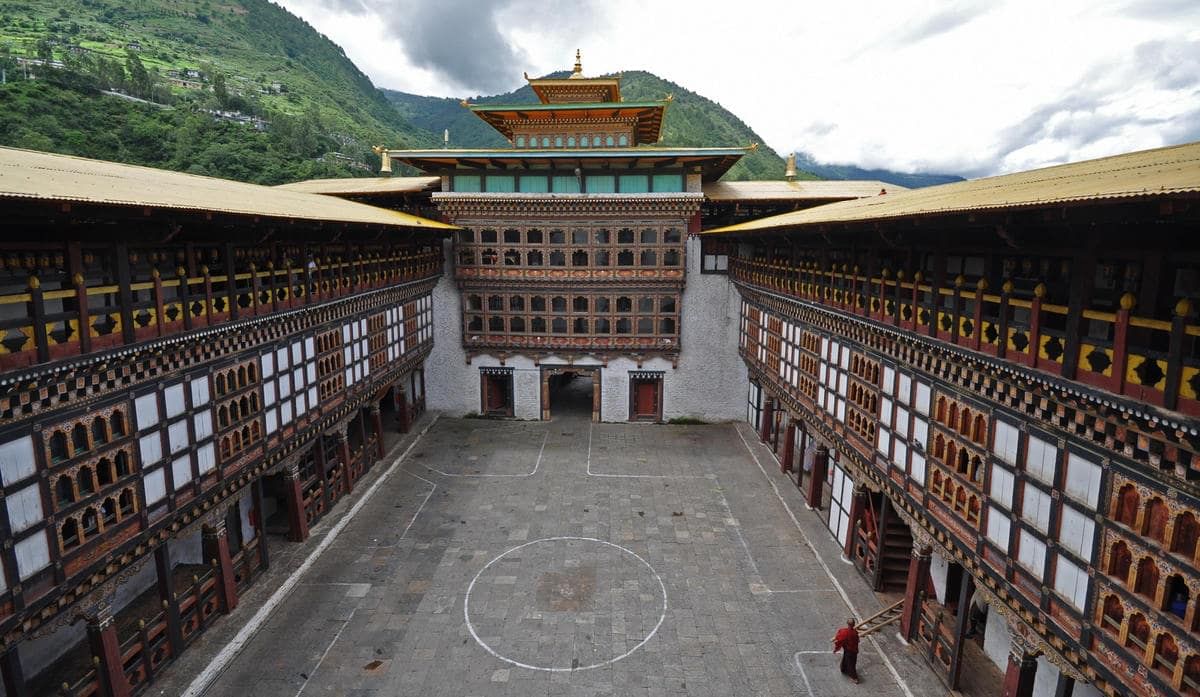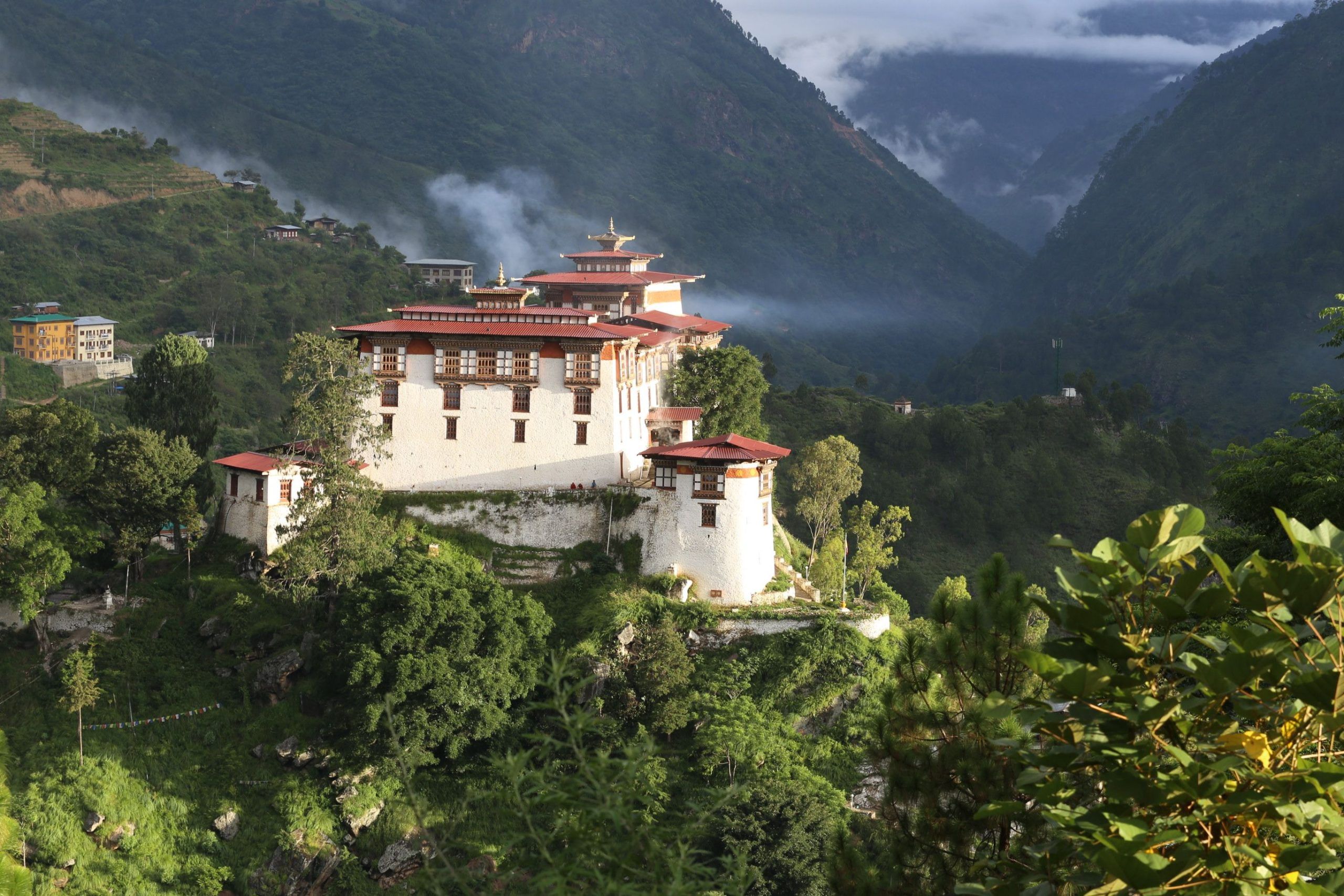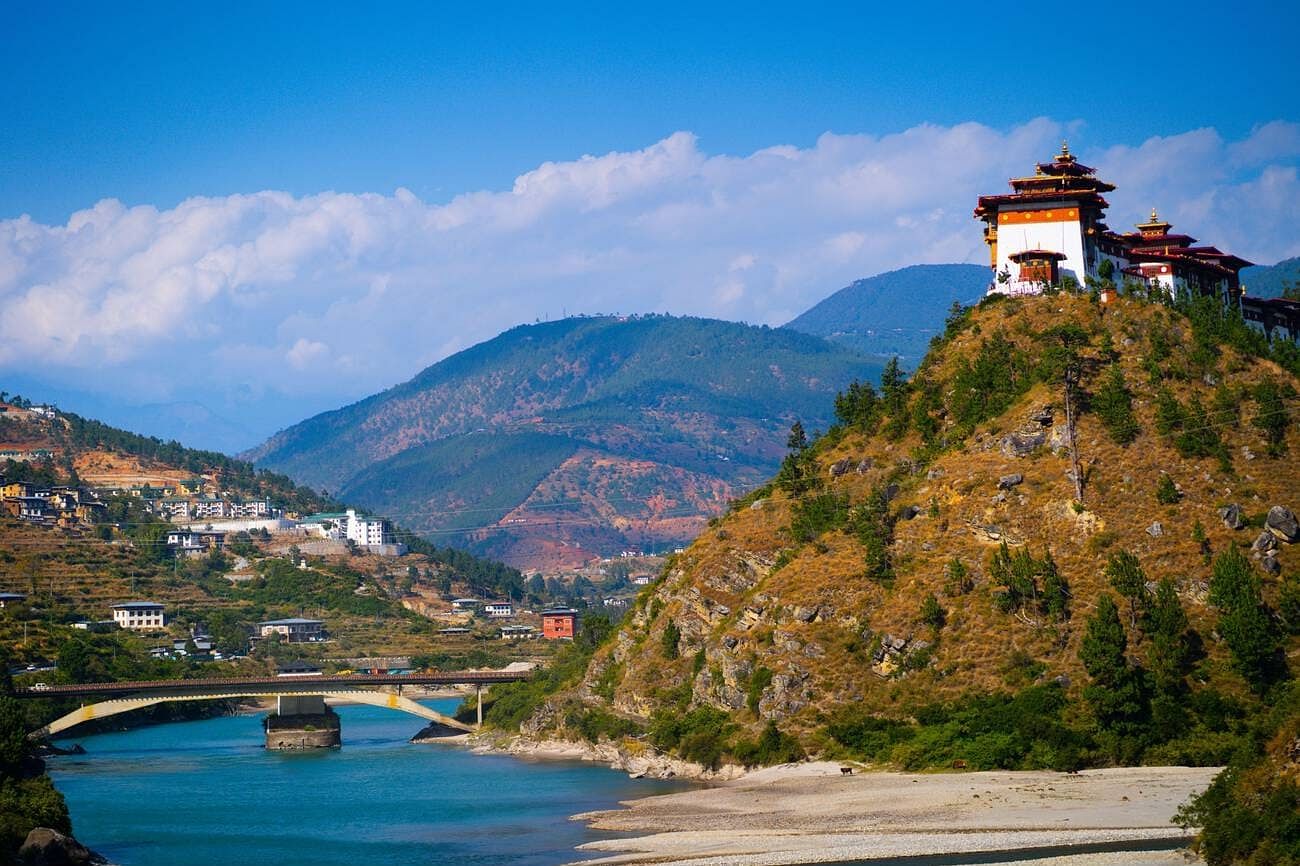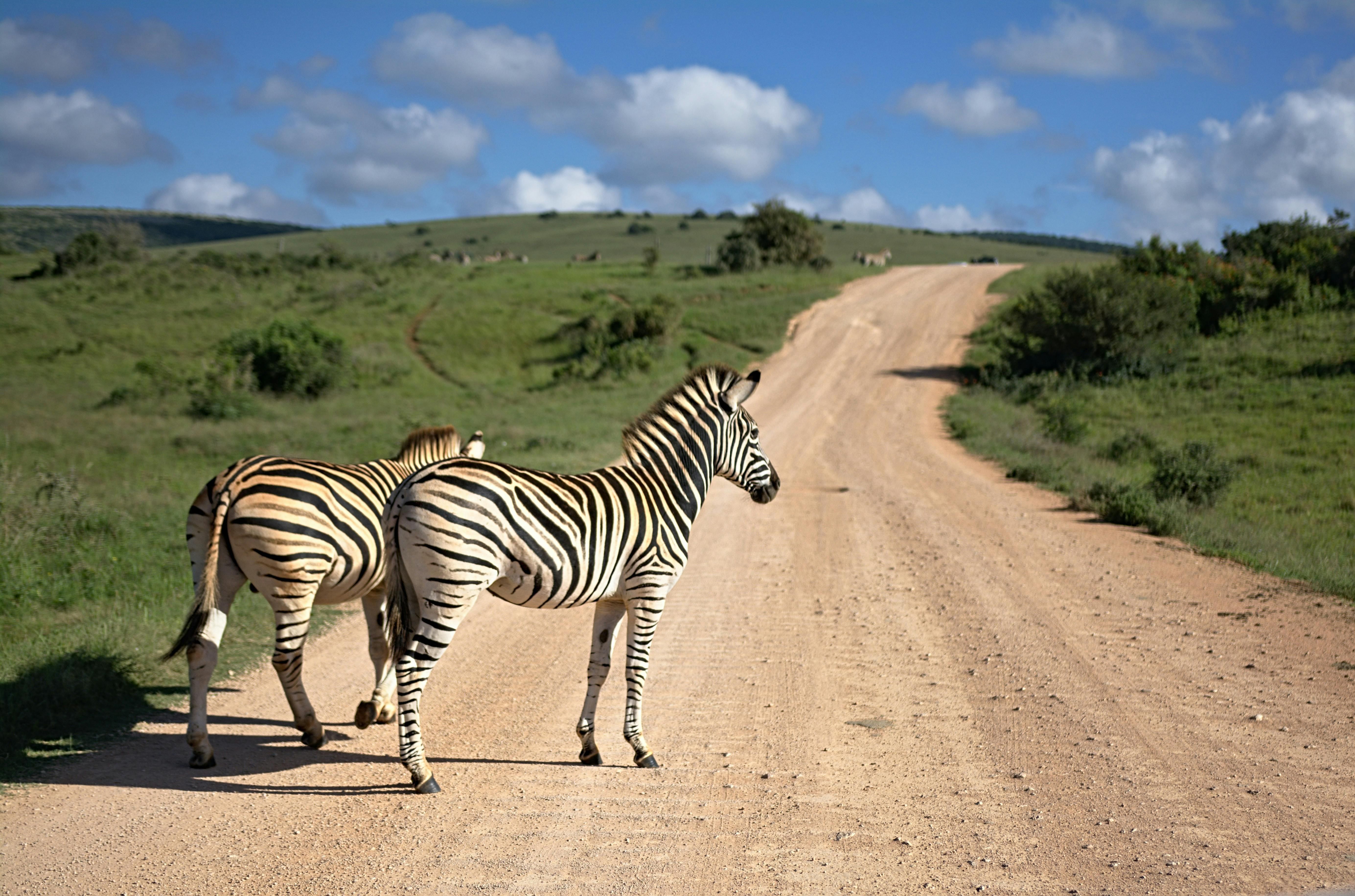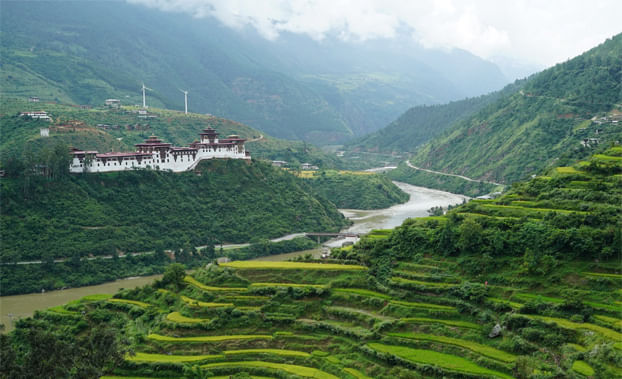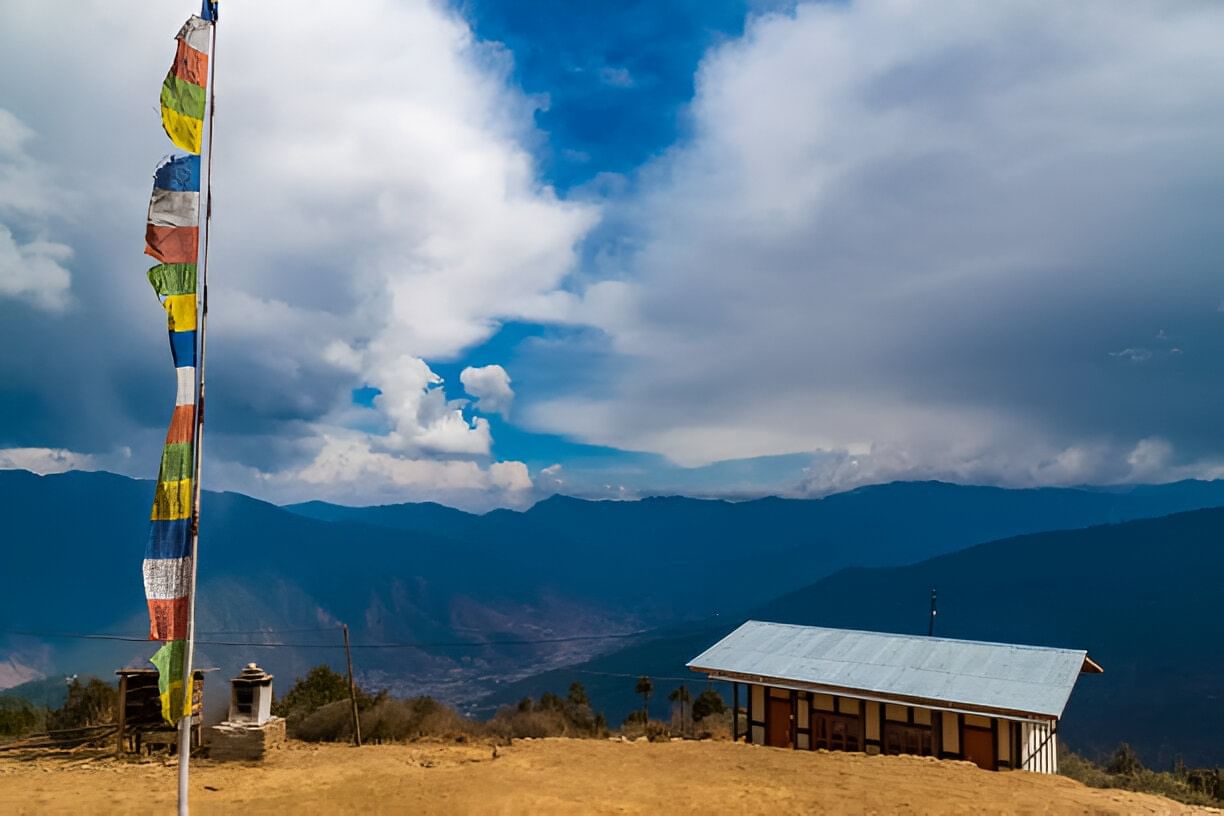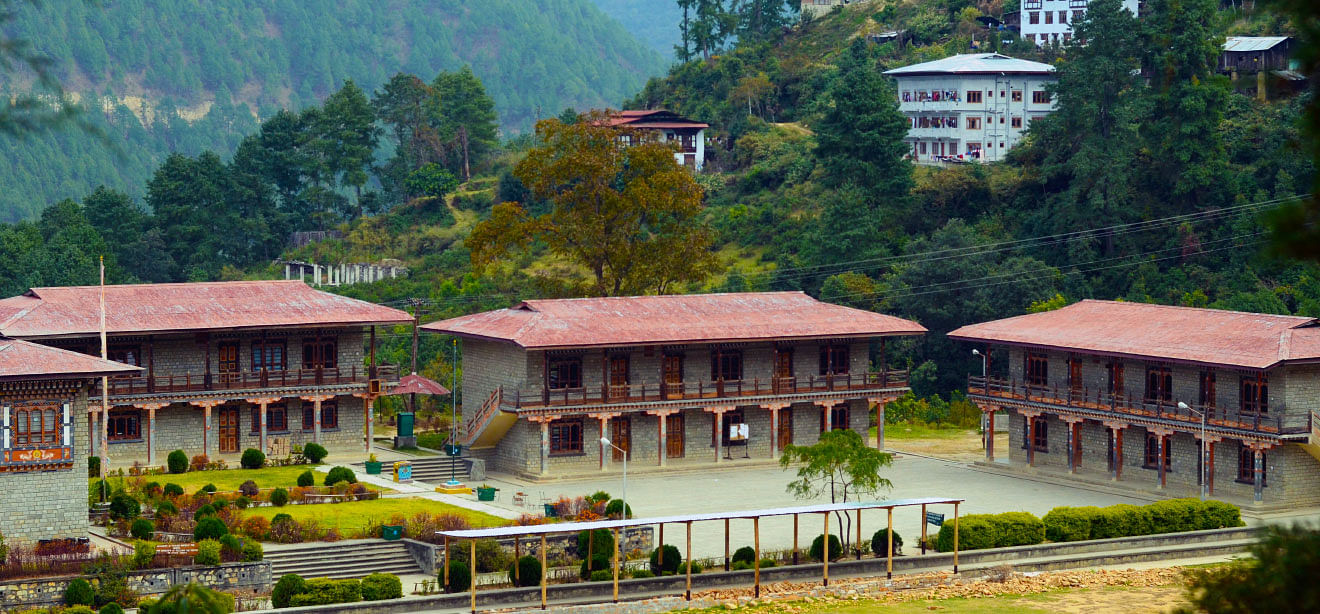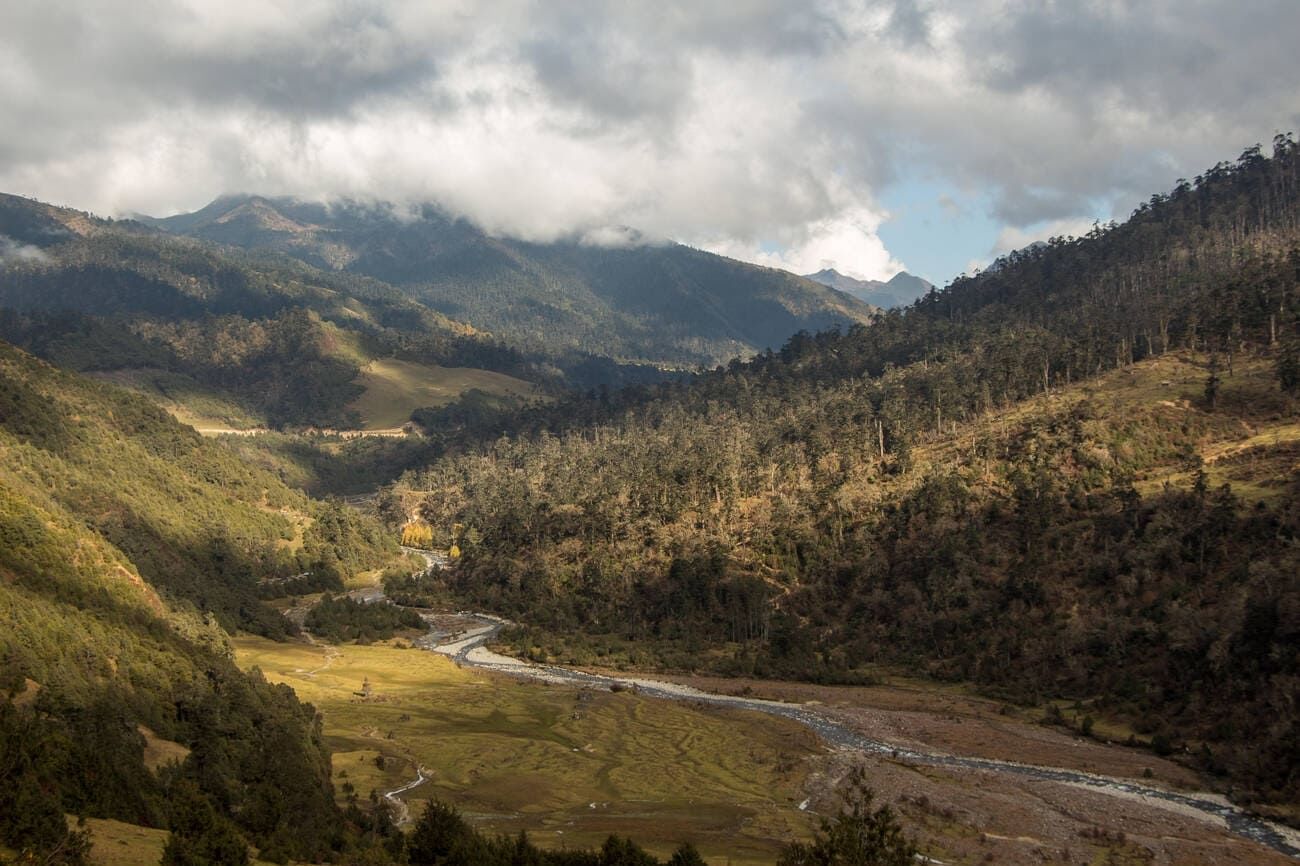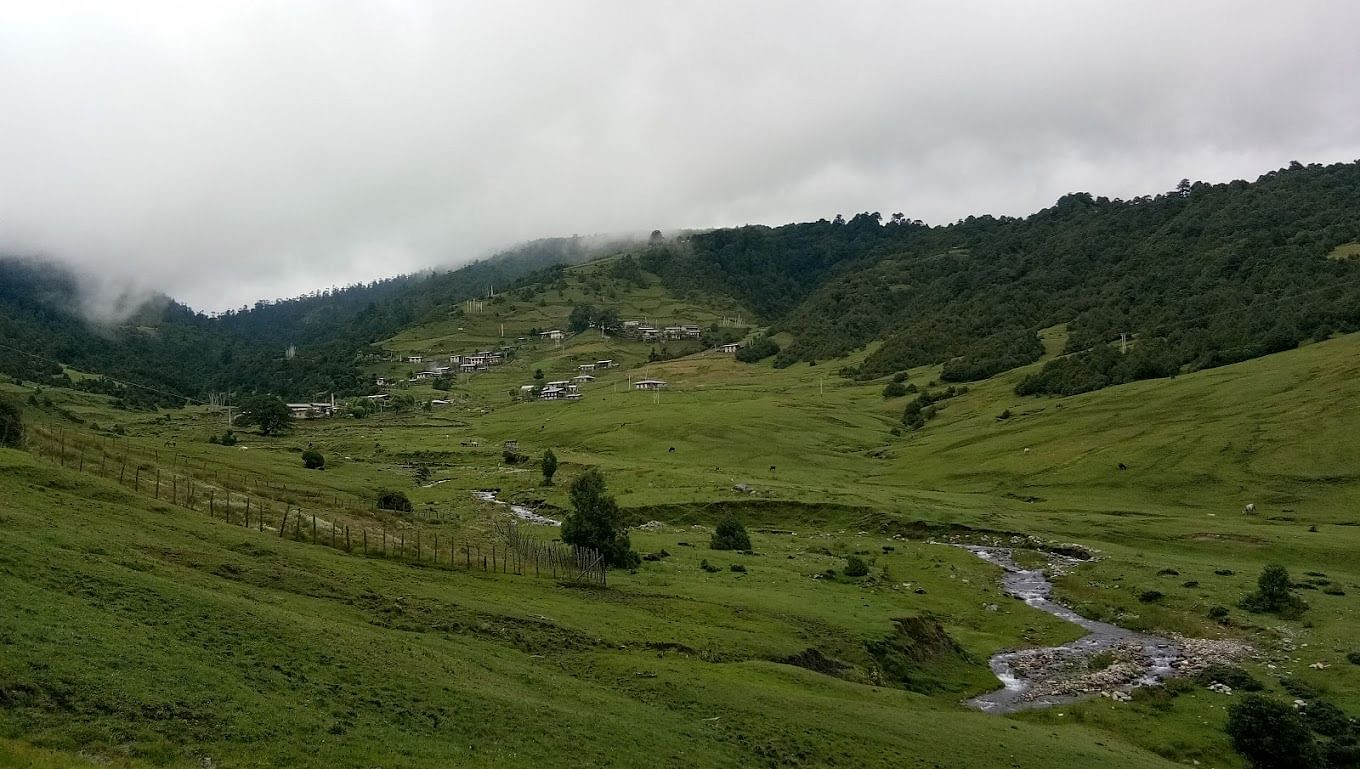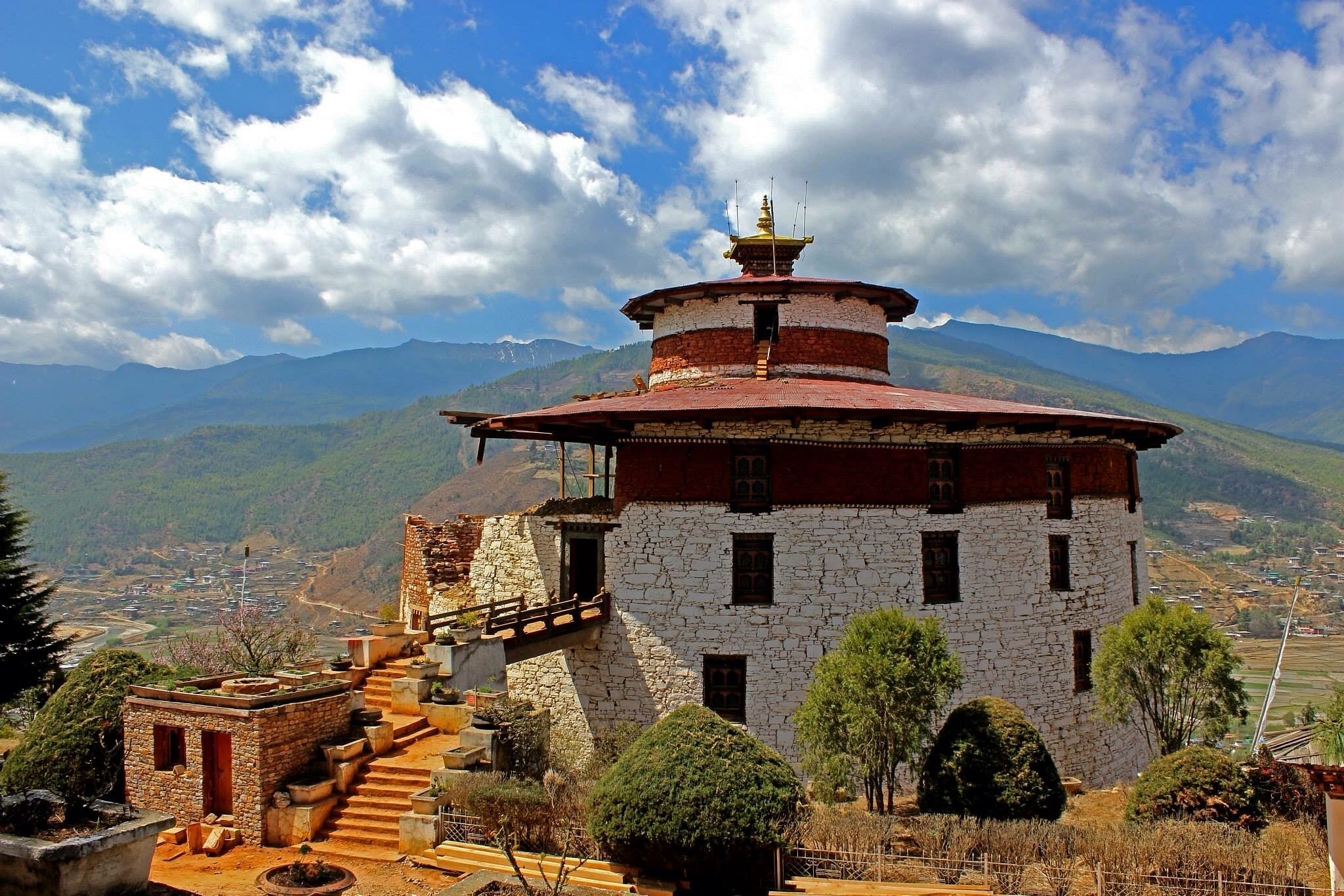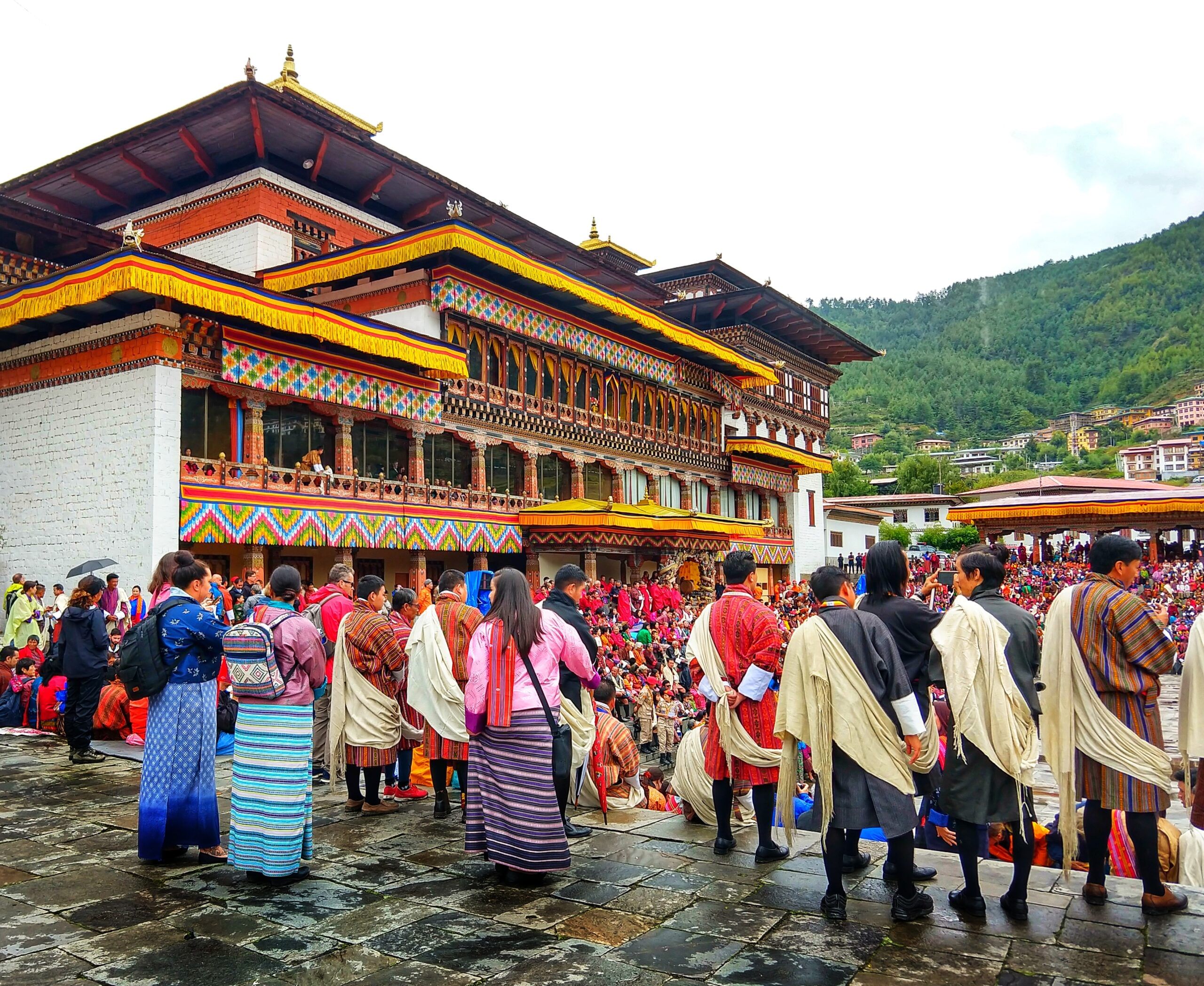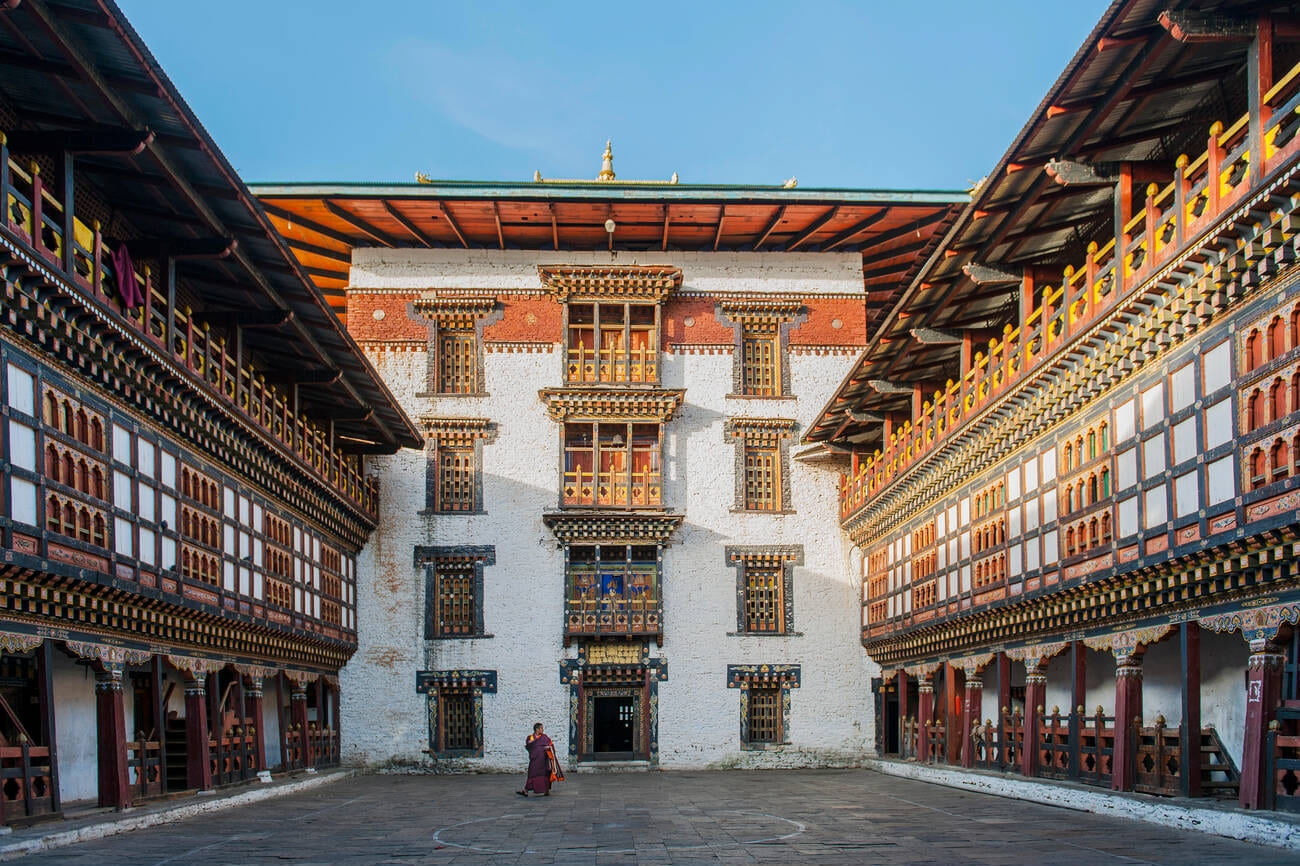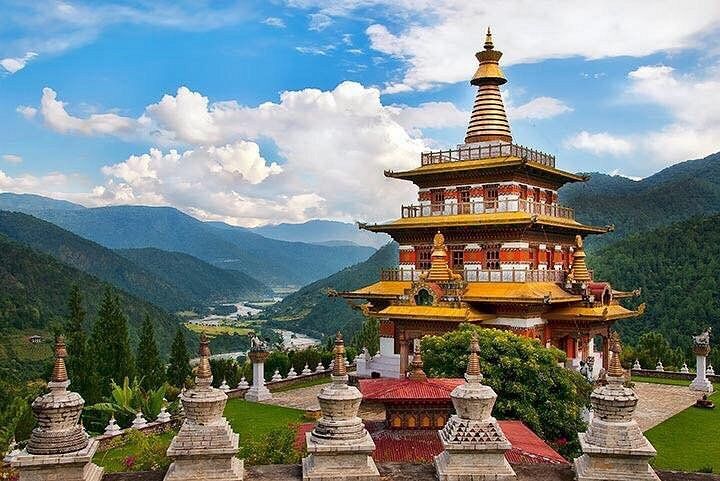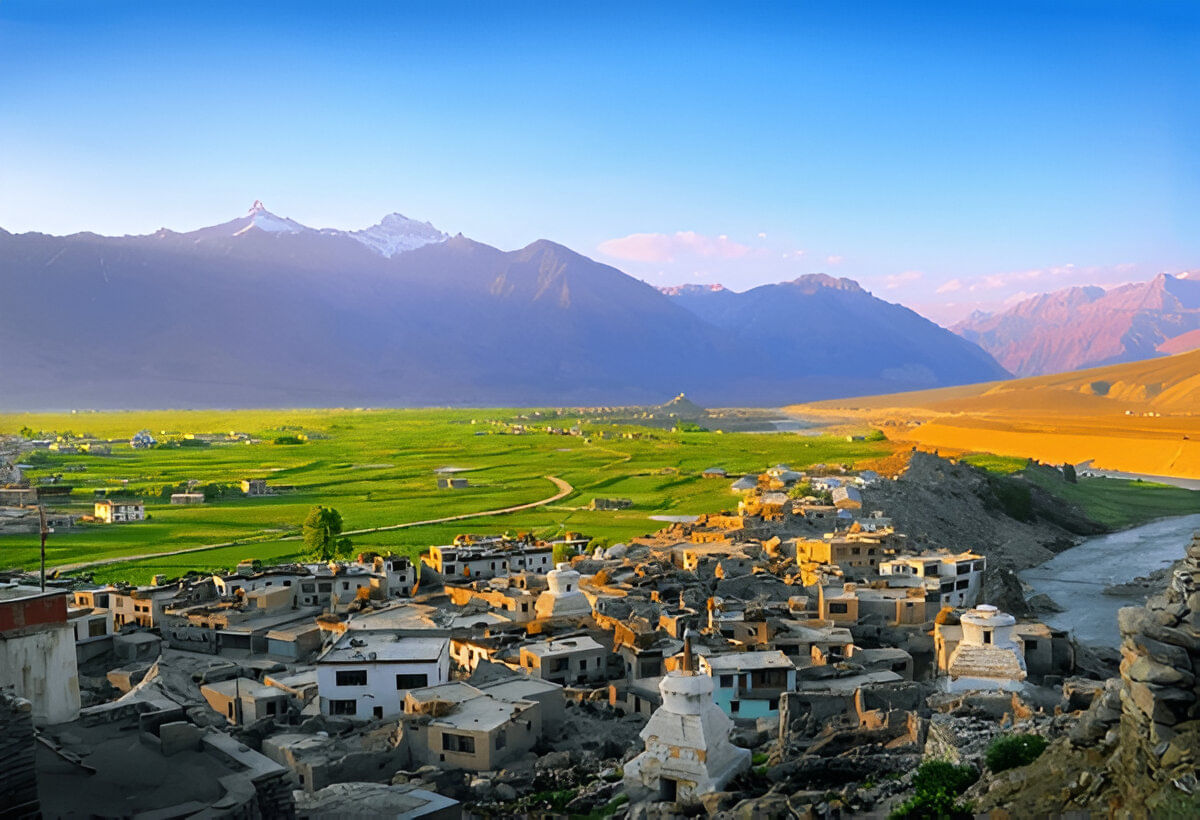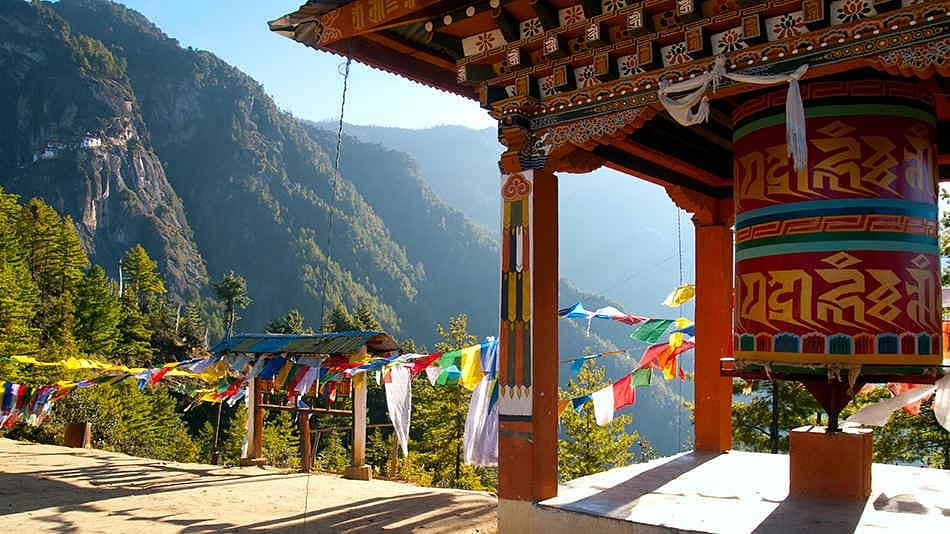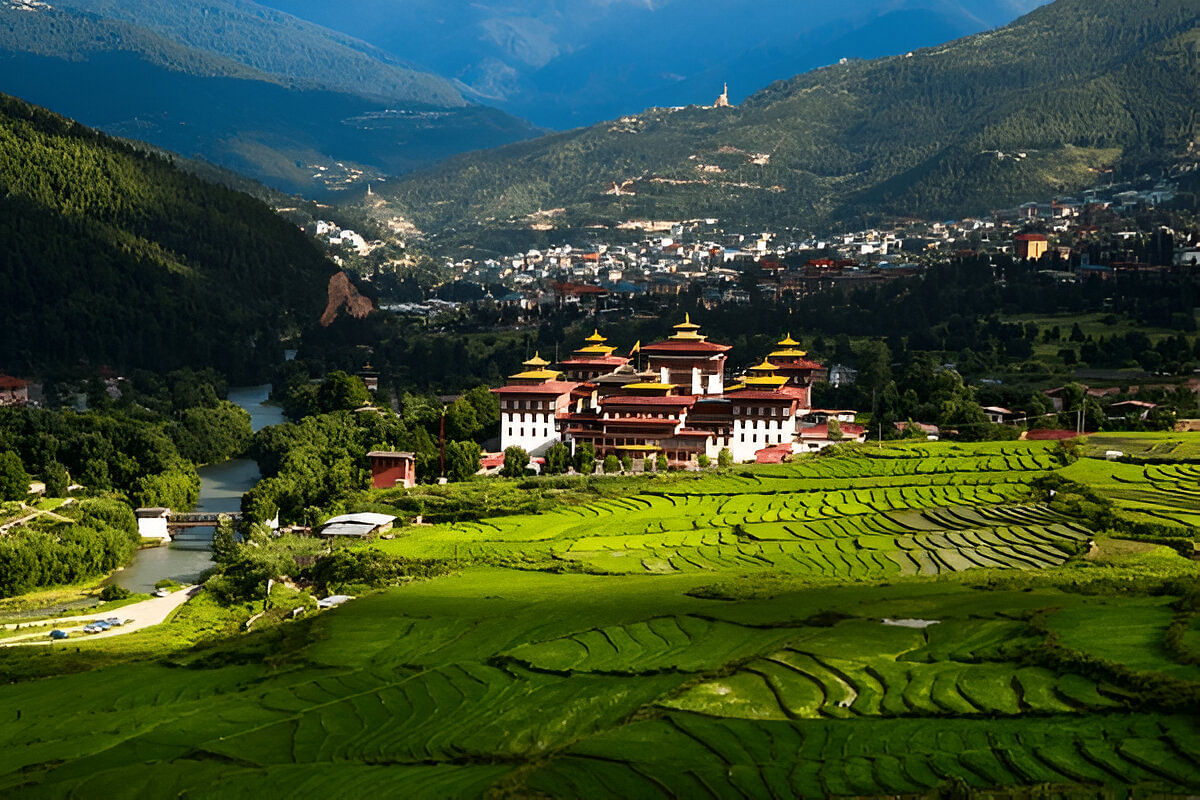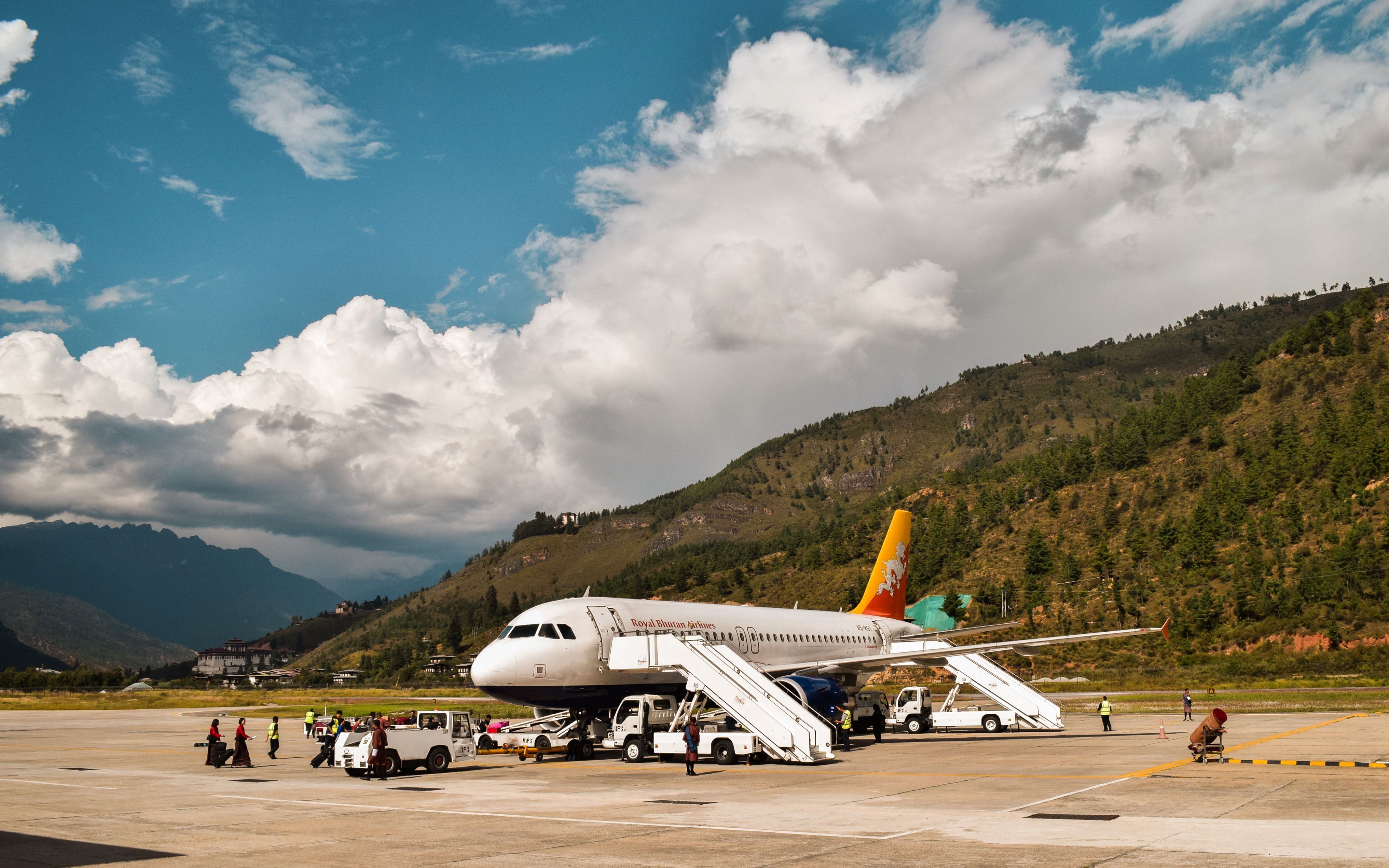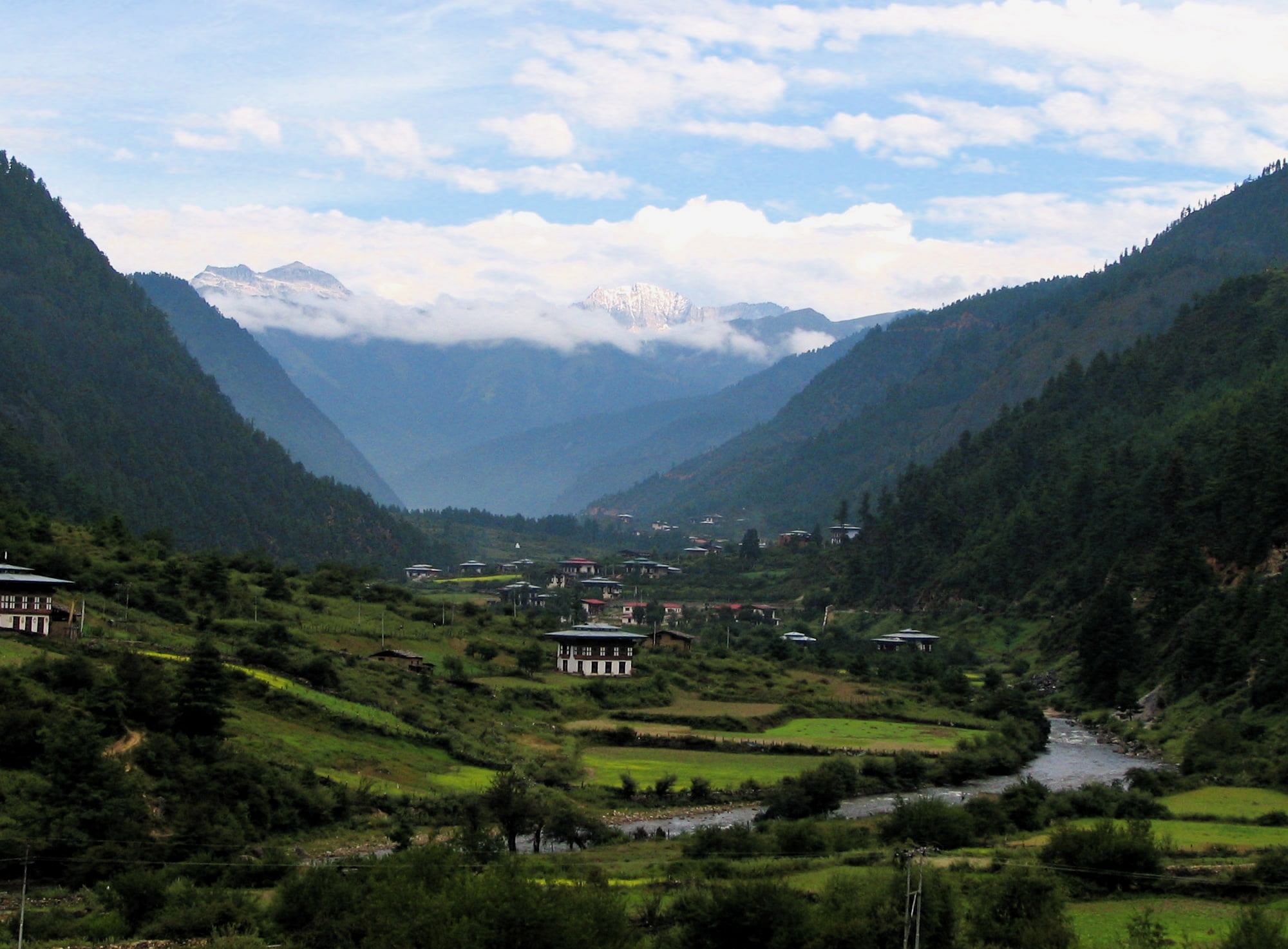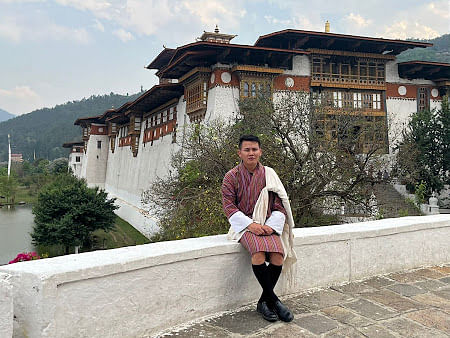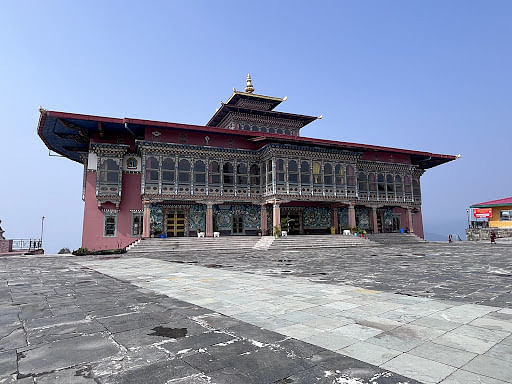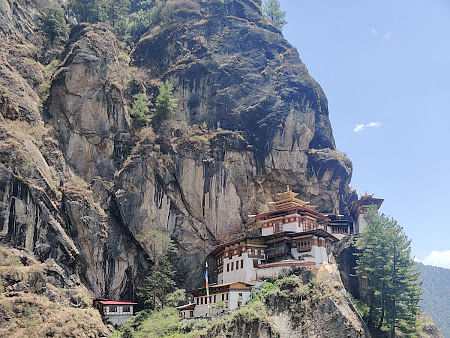Taktsang Palphug Monastery , Punakha Dzong, Rinpung Dzong , Chele La Pass, Buddha Dordenma Statue , Dochula Pass, Phobjikha Valley , and Jigme Dorji National Park - yeah, there's a lot to see here.
Most places to visit in Bhutan don't disappoint. Those old fortresses aren't just for show - people actually work in them. The monasteries on the cliff top seem impossible but monks live there every day. Prayer flags blow everywhere, not because tourists placed them there for a view, but because locals put them up.
Paro Valley becomes congested but Rinpung Dzong is worth the crowds. Thimphu is a normal city until you take a turn and there is a 400-year-old temple.
The things to do in Bhutan is solid too. Rafting Khamsum Yulley isn't some gentle float - it's proper whitewater. Rock climbing The Nose will humble anyone. Kayaking the rivers beats sitting in hotels.
Bhutan tourist places work because they're not trying too hard. Things to do in Bhutan happen naturally - temple visits, mountain hikes, meeting locals who aren't performing for tips. Want to check it out? Our Bhutan Trip Packages will sort everything.
26 Popular Tourist Places to Visit in Bhutan 2025
1. Tiger's Nest Monastery (Paro Taktsang)
If there’s one place you can’t miss in Bhutan, it’s Paro Taktsang. Located on the edge of a cliff, the monastery looks straight out of a fairytale. The trek up through pine forests, with prayer flags fluttering in the wind, is invigorating, and every step rewards you with a better view of the valley below. Inside, the peaceful temples and the smell of incense make you forget the world. It’s easily one of the most beautiful places in Bhutan, and honestly, standing there, you feel why it’s considered a must-visit among places to visit in Bhutan.
Pro tip: Go early! The morning light is killer for photos, and you'll beat both the heat and the tour groups.
- Location: Cliffside of upper Paro Valley, about 10 km north of Paro town, Bhutan.
- Things to Do: Hike through pine forests and explore the sacred monastery caves
- Best Time to Visit: March to May and September to November
2. Punakha Dzong - The Palace of Great Happiness
If Tiger's Nest is Bhutan's rock star, Punakha Dzong is its supermodel. This massive white fortress sits right between two rivers (the "male" and "female" rivers - how cute is that?), and it's drop-dead gorgeous.
We lucked out and visited during jacaranda season when purple flowers frame the white walls. Our cameras practically had a meltdown! Inside, the temples and courtyards are just as impressive - massive Buddha statues, intricate wood carvings, and monks debating scripture.
Don't rush this one. Seriously. Pack a lunch, find a spot overlooking the fortress, and just soak it all in. It's easily one of the top places to visit in Bhutan for good reason.
- Location: Located in Punakha Valley, 3 hours drive from Thimphu.
- Things to Do: Explore the fortress, see ancient murals, attend Punakha Tshechu, and cross the suspension bridge.
- Best Time to Visit: March to May and October to November.
best selling bhutan tour packages
3. Thimphu - Where Traditional Meets Modern
As Bhutan's capital, Thimphu is where you'll see the country's balancing act between ancient traditions and the modern world. Fun fact: it's the only capital city without a single traffic light! Instead, there's a white-gloved policeman directing traffic from a little booth, and honestly, it works perfectly.
While you're here, don't miss:
- Buddha Dordenma - a massive gold Buddha statue overlooking the valley
- The weekend market - go hungry and try all the weird local fruits
- Motithang Takin Preserve - to see Bhutan's bizarre national animal (imagine if a goat and a moose had a baby)
- Simply watching locals going about their day in traditional dress
- The nightlife is pretty tame, but Mojo Park has decent live music and the local Red Panda beer is surprisingly good!
Location: Capital city of Bhutan, located in the western part of the country beside the Wang Chhu River.
Best Time to Visit: March-May and September-November for clear skies and festivals.
4. Phobjikha Valley - Land of the Black-Necked Cranes
If you're lucky enough to visit between October and February, you might spot the endangered black-necked cranes that Bhutanese people consider sacred. Even without the birds, this wide glacial valley is crazy beautiful - rolling hills, potato fields, and pine forests as far as the eye can see.
We stayed in a farmhouse here, and it was the definition of cozy - wooden stove keeping us warm, homemade cheese and rice wine flowing freely, and the loveliest family teaching us how to eat chilies like locals (spoiler: we failed miserably).
What makes this one of the must-see places to see in Bhutan is how incredibly peaceful it is. The valley only got electricity in 2008, and many homes still choose to go without to protect the crane habitat. Talk about commitment to conservation!
- Location: Phobjikha Valley lies in the central part of Bhutan, in Wangdue Phodrang district, about 135 km from Thimphu.
- Things to Do: Watch black-necked cranes, visit Gangtey Monastery, walk the Gangtey Nature Trail, explore traditional villages.
- Best Time to Visit: October to March for crane sightings and peaceful weather.
5. Bumthang Valley - Bhutan's Spiritual Heart\
Bumthang isn't just one place but four valleys packed with ancient temples - over 40 of them! This is basically Bhutan's spiritual headquarters, and you can feel it the moment you arrive.
Must-visits include Jambay Lhakhang (built in 659 AD in a SINGLE day, supposedly) and Kurjey Lhakhang where you can see Guru Rinpoche's body imprint in solid rock. We're not usually religious people, but even we got goosebumps.
The region is also famous for its honey, cheese, and the only commercial brewery in Bhutan. We may have stuffed our backpacks with buckwheat pancake mix and Red Panda beer before leaving. No regrets!
- Location: Central Bhutan, in Bumthang District, home to four scenic valleys.
- Things to Do: Visit ancient monasteries like Kurjey Lhakhang, trek through Tang Valley, explore Jakar Dzong, and try local cheese and Red Panda beer.
- Best Time to Visit: October-November for festivals, or April-May for rhododendron blooms and pleasant weather.
6. Trongsa Dzong - The Ancestral Home of Royalty
This massive fortress looks like it's growing straight out of the mountainside. It's so strategically located that historically, anyone traveling between eastern and western Bhutan had to pass through it - talk about a power move!
What makes Trongsa one of the most impressive Places to Visit in Bhutan is its sheer size - a labyrinth of temples, courtyards, and offices connected by passages that seem to go on forever. The views from the ramparts are insane - you can see for miles down the valley.
Don't skip the museum above the dzong. It's packed with royal treasures, and the multimedia displays actually helped us understand Bhutan's history better than any guidebook.
- Location: Trongsa, Central Bhutan, overlooking the Mangde River.
- Things to Do: Explore ancient courtyards, visit Ta Dzong museum, enjoy valley views.
- Best Time to Visit: October to February for clear skies and the Trongsa Tshechu festival.
7. Haa Valley - The Hidden Gem
Until 2002, Haa valley was completely off-limits to foreigners, which means it's still deliciously untouched. There are no fancy hotels or restaurants - just farmhouses, grazing yaks, and some of the most stunning alpine scenery you'll ever see.
The twin temples (Black and White) are worth a visit, but honestly, the real magic happens when you just wander. We spent three days hiking through blue pine forests, chatting with nomadic herders, and eating farm-fresh food that would make any organic market back home jealous.
If you want authentic Bhutan without the (relative) crowds, Haa should be high on your list of places to see in Bhutan.
- Location: Western Bhutan, around 65 km from Paro.
- Things to Do: Visit Lhakhang Karpo & Nagpo, hike Chele La Pass, explore villages, enjoy archery, and capture scenic views.
- Best Time to Visit: March to June and September to November.
8. Gangtey Monastery - Perched Above the Valley
Looking down on Phobjikha Valley, Gangtey Monastery is a 17th-century monastery that is seriously impressive. It's the only Nyingmapa monastery in western Bhutan, and the elaborate artwork inside will have you staring slack-jawed for hours.
We lucked out and visited during morning prayers - about 20 young monks chanting by candlelight, the smell of juniper incense thick in the air. It was one of those travel moments we'll never forget.
If possible, time your visit for the Gangtey Tshechu festival when the whole place comes alive with masked dances and celebrations. The locals dress in their absolute finest, and you'll feel like you've time-traveled back a few centuries.
- Location: Phobjikha Valley, Wangdue Phodrang District, central Bhutan.
- Things to Do: Explore the 17th-century monastery, watch black-necked cranes, enjoy valley treks, and experience local festivals.
- Best Time to Visit: October to February (for crane sightings and clear weather).
9. Dochula Pass - Home to 108 Stupas
On the road between Thimphu and Punakha sits Dochula Pass. This mountain pass with 108 white stupas and - on clear days - jaw-dropping views of the Himalayas. At 10,000 feet, it's literally breathtaking!
The memorial stupas were built to honor Bhutanese soldiers, and walking among them feels powerfully solemn. Even on cloudy days (which are common), there's something magical about the mist swirling around the white monuments.
Pack an extra layer - it's chilly up here! - and stop at the royal botanical garden and small temple with some impressive contemporary paintings of Bhutan's history.
- Location: On the road between Thimphu and Punakha, Bhutan (Elevation: 3,100 meters).
- Things to Do: Admire the 108 chortens, enjoy Himalayan views, visit Druk Wangyal Lhakhang.
- Best Time to Visit: March to May and October to December for clear skies and snow-capped peaks.
10. Tashichho Dzong - Thimphu's Crown Jewel
Tashichho Dzong is a massive fortress pulls double duty as both a religious center and the seat of Bhutan's government. The king's office is here, along with various ministries and the central monk body (in summer).
What struck us most was how the building perfectly balances ancient architecture with modern purpose. It's not just for show - real governance happens here daily. During festivals, the courtyard fills with thousands of people watching traditional mask dances.
Fun fact: unlike many religious sites, parts of this dzong are off-limits for photography - which honestly made us appreciate it more since we were actually present instead of viewing everything through our phone screens.
- Location: Located on the northern edge of Thimphu city, near the Wang Chhu River.
- Things to Do: Explore its majestic Bhutanese architecture, visit the throne room, and witness the evening flag-lowering ceremony.
- Best Time to Visit: March to May and September to November for pleasant weather and festival vibes.
11. Royal Manas National Park - Where the Wild Things Are
As Bhutan's oldest protected area, Royal Manas is a biodiversity hotspot that should be on any nature lover's list of top places to visit in Bhutan. It shares a border with India's Manas Tiger Reserve, creating one massive conservation zone.
The wildlife spotting here is next-level - tigers, elephants, one-horned rhinos, and those adorable golden langur monkeys. We spent three days with a guide and though we never saw a tiger, finding fresh paw prints one morning gave us a serious adrenaline rush!
Fair warning: facilities are basic and you need patience for wildlife spotting. But that's what makes it special - this isn't some zoo-like experience but a real wilderness adventure.
- Location: Southern Bhutan, bordering India’s Assam and West Bengal.
- Things to Do: Jungle safaris, birdwatching, river rafting, and wildlife spotting (elephants, tigers, golden langurs).
- Best Time to Visit: November to March for pleasant weather and clear wildlife sightings.
12. Trashi Yangtse - The Far East
Way off in eastern Bhutan lies this district famous for wooden crafts and paper making. Few tourists make it this far, which means more authentic experiences for those who do!
The star attraction is Chorten Kora, a stupa built in Nepali style but with distinctive Bhutanese elements. Locals believe walking around it during the annual festival removes a year's worth of sins - sign us up!
Nearby Bumdeling Wildlife Sanctuary hosts black-necked cranes in winter and rare plants like Bhutan's national flower, the blue poppy. The journey here is long but 100% worth it if you want to see a side of Bhutan most tourists miss.
- Location: Trashi Yangtse is located in eastern Bhutan, near the border with Arunachal Pradesh, India.
- Things to Do: Visit Chorten Kora, explore traditional woodcraft at the School of Arts, and hike to sacred sites like Gom Kora.
- Best Time to Visit: March to May and September to November for clear skies and pleasant weather.
13. Lhuentse - Kingdom of Textiles
This northeastern district is the ancestral home of Bhutan's royal family, with a spectacular dzong overlooking the Kurichu River. It looks like it's literally growing out of the rocky cliff below!
What really makes Lhuentse special is its weaving tradition. The women here create the most intricate textiles in the country - kira (women's dress) from here can take six months to weave and cost thousands of dollars. We visited a weaving center and were blown away by the skill and patience involved.
The remote villages here offer an authentic glimpse into rural life that makes it one of the best places to visit in Bhutan for tourists seeking genuine cultural experiences.
- Location: Northeastern Bhutan, about 77 km from Mongar.
- Things to Do: Explore Lhuentse Dzong, visit Khoma village for traditional weaving, hike to sacred sites.
- Best Time to Visit: March to May and September to November.
14. Wangdue Phodrang - Land of Traditions
Just a stone's throw from Punakha lies Wangdue, traditionally known for slate carvings and bamboo work. The original dzong unfortunately burned down in 2012, but the rebuilt structure maintains the magnificence of its predecessor.
What we loved about this area was the dramatic landscape - sheer cliffs, terraced rice fields, and the Dang Chhu river snaking through it all. The surrounding villages offer a glimpse into rural Bhutanese life without having to venture too far off the beaten path.
If you can time your visit for the Wangdue Festival, you'll witness the famous "Dance of the Oxen" celebrating a local legend about a wise raven. The energy is absolutely electric!
- Location: Central Bhutan, east of Punakha.
- Things to Do: Explore Wangdue Phodrang Dzong, visit Phobjikha Valley, and see traditional stone carving.
- Best Time to Visit: October to December for clear skies and black-necked crane sightings.
15. Jigme Dorji National Park - Adventure Playground
Spanning from subtropical forests to permanent ice fields, Jigme Dorji national park is a paradise for adventure seekers. It's one of the top attractions in Bhutan for good reason - where else can you potentially spot snow leopards, takins, and hundreds of bird species?
For serious trekkers, parts of the legendary Snowman Trek run through here. If that sounds too intense (it was for us!), the Gasa Hot Springs Trek offers a more accessible option with the reward of natural hot springs at the end. Trust us, there's nothing better than soaking in mineral-rich water after days of hiking!
The park's vastness means you could spend weeks exploring and never see it all. Our advice? Pick one area and dive deep rather than trying to cover too much ground.
- Location: Northwestern Bhutan, covering districts like Thimphu, Paro, Punakha, Gasa, and Wangdue Phodrang.
- Things to Do: Trekking, wildlife spotting (like snow leopards and red pandas), birdwatching, and visiting hot springs.
- Best Time to Visit: March to May and September to November.
16. Paro Valley - Beyond Tiger's Nest
While most people only associate Paro with Tiger's Nest, the entire valley deserves exploration as one of the essential Places to Visit in Bhutan. Start at the National Museum (housed in an ancient watchtower) for an excellent introduction to Bhutanese culture.
Don't miss Kyichu Lhakhang, one of Bhutan's oldest temples allegedly built in the 7th century. The story goes that it was one of 108 temples built in a single day to pin down a demoness who was preventing the spread of Buddhism. True or not, the temple has an incredibly peaceful energy.
Drukgyel Dzong, a picturesque ruin with Mt. Jumolhari in the background, makes for killer photos. And simply wandering through the traditional farmhouses with their distinctive architecture gives you a feel for rural Bhutanese life.
- Location: Western Bhutan, about 50 km from Thimphu.
- Things to Do: Hike to Tiger’s Nest, visit Paro Dzong, explore the National Museum, and walk around Paro town.
- Best Time to Visit: March to May and September to November.
17. Dagala Thousand Lakes Trek - For the Hikers
Despite the name, you won't literally see a thousand lakes on this 5-6 day trek, but the ones you do encounter are gorgeous enough to make up for any numerical exaggeration!
What makes this one of the best places to visit in Bhutan for tourists who enjoy hiking is its accessibility - it's challenging but doable for reasonably fit people without mountaineering experience. The highest point reaches about 4,700 meters with views that'll blow your mind.
We loved meeting yak herders along the way and camping beside pristine lakes reflecting snow-capped peaks. And unlike Nepal's crowded trails, we had most of the route to ourselves - a true wilderness experience!
- Location: Near Thimphu, in western Bhutan.
- Things to Do: High-altitude trekking, camping by alpine lakes, birdwatching, and spotting Himalayan wildlife.
- Best Time to Visit: April to June and September to mid-November.
18. Mongar - Gateway to Eastern Bhutan
As the commercial hub of eastern Bhutan, Mongar offers a different flavor of Bhutanese culture. The dzong here was actually built in the 1930s but follows traditional methods without using a single nail - pretty impressive craftsmanship!
Getting to Mongar is half the adventure, crossing the dramatic Thrumshing La pass (12,400 feet) with its spectacular views. We noticed immediately that eastern Bhutan has distinct dialects, textiles, and customs from the west - it almost feels like a different country.
Nearby Drametse Monastery is home to the famous "Drum Dance" - a UNESCO-recognized performance with masked dancers and synchronized drumming that's out of this world.
- Location: Eastern Bhutan, approximately 200 km from Bumthang.
- Things to Do: Explore Mongar Dzong, hike to Drametse Monastery, shop for handloom textiles.
- Best Time to Visit: March to May and September to November.
19. Sakteng Wildlife Sanctuary - Land of the Yeti?
For the truly adventurous, this remote sanctuary in far eastern Bhutan offers a once-in-a-lifetime experience. It was partially created to protect the migoi (yeti), which many locals genuinely believe inhabits these mountains!
Whether or not you believe in the abominable snowman, the Sakteng Wildlife Sanctuary’s unique ecosystem and the semi-nomadic Brokpa people make it worth the effort to get here. The Brokpa maintain distinct cultural traditions - women wear these amazing black yak-hair hats with five "fingers" pointing skyward.
Getting here requires special permits and a multi-day hike, but being among the very few tourists to experience this region places it high among Bhutan places to visit for intrepid travelers. We spent five days hiking through rhododendron forests and staying in traditional Brokpa homes - easily the most off-the-grid experience of our lives.
- Location: Eastern Bhutan, spanning Trashigang and Samdrup Jongkhar districts near the Indian border.
- Things to Do: Spot rare species like the red panda, hike through alpine meadows, explore Brokpa villages, and enjoy birdwatching.
- Best Time to Visit: March to June and September to November.
20. Merak Village - Time Travel
Until very recently, this remote eastern village was only accessible by foot. Home to the same Brokpa people as neighboring Sakteng, Merak offers an authentic glimpse into traditional pastoral life that feels like stepping back centuries.
Sitting at about 11,500 feet, surrounded by pristine mountains, the village consists of simple wooden houses with distinctive architecture. Local homestays let you experience daily life - churning butter tea, watching traditional weaving, and gathering around the wood stove for evening storytelling.
What struck us most was how genuinely happy people seemed despite having few material possessions. When we talk about Bhutan's famous Gross National Happiness, it's in places like Merak where you really see it in action.
- Location: Located in the far eastern Trashigang district near the Indian border, part of the Sakteng Wildlife Sanctuary.
- Things to Do: Meet the Brokpa people, witness traditional yak herding, explore scenic trails, and attend the annual Merak Tshechu.
- Best Time to Visit: March to May and September to November.
21. National Museum of Bhutan (Paro)
Housed in an ancient watchtower, the National Museum of Bhutan in Paro is a treasure trove of culture. It displays art, traditional weapons, costumes, and religious relics, giving travelers a peek into Bhutanese history. Children and adults alike find it fascinating, making it one of the places to visit in Bhutan with kids.
The museum also provides stunning views of Paro Valley, which adds to the experience. If you’re exploring Bhutan tourist spots, this museum is a calm and educational stop. It’s one of the best Bhutan tourist attractions for anyone wanting to understand the country’s rich heritage.
- Location: Situated in Paro, the museum is housed in a former watchtower called Ta Dzong, overlooking the Paro Valley.
- Things to Do: Explore exhibits showcasing Bhutanese art, armor, textiles, and religious artifacts
- Best Time to visit: Spring (March to May) and autumn (September to November)
Chimi Lhakhang is often called the “Fertility Temple” and has a quirky charm that travelers love. Pilgrims come here to seek blessings for children, and the temple is adorned with colorful paintings and simple wooden carvings.
Walking around the temple and its surrounding fields is peaceful, making it one of the Bhutan tourist places worth visiting. Its unique history makes it one of the must-see places in Bhutan, and it’s also considered one of the popular places to visit in Bhutan for travelers seeking local culture and traditions.
- Location: Located in the Punakha Valley
- Things to Do: Participate in local rituals and receive blessings
- Best Time to visit: October-April
Simtokha Dzong, built in 1629, is Bhutan’s oldest dzong and a symbol of its history. It houses religious teachings and serves as an educational center. Walking through the dzong’s walls, you can admire Bhutanese murals, carvings, and architecture. It’s one of the popular places to visit in Bhutan for history lovers.
Visitors often stop here to take photos and appreciate its ancient charm. As one of the must see places in Bhutan, Simtokha Dzong also provides a peaceful retreat away from crowded tourist areas. Its cultural significance makes it one of the best Bhutan tourist spots.
- Location: Thimphu
- Things to Do: Attend cultural programs and festivals held at the dzong
- Best Time to Visit: March-May and September-November
Trashigang, called the “Jewel of the East,” is a lively town with vibrant markets and surrounding mountains. It’s one of the popular places to visit in Bhutan, giving travelers a glimpse of eastern Bhutanese life. The dzong here and nearby villages make it one of the Bhutan tourist spots worth exploring.
It’s also one of the top places to visit in Bhutan for travelers wanting to experience a mix of culture and everyday local life. Walking through Trashigang, you can enjoy stunning views, meet friendly locals, and see how Bhutanese traditions thrive in modern life.
- Location: Located in eastern Bhutan
- Things to Do: Experience Trashigang Tshechu festival held in November, Explore nearby villages, Visit the Trashigang Dzong.
- Best Time to Visit: October-December
25. Khamsum Yulley Namgyal Chorten
Built by the Queen Mother, this stupa overlooks the Punakha Valley and is surrounded by rice fields. A short hike brings you to its base, offering views of the valley. It’s one of the top places to visit in Bhutan for scenic beauty and photography.
The colorful walls, intricate murals, and peaceful surroundings make it one of the best Bhutan tourist spots. Visitors enjoy walking around the chorten and admiring the craftsmanship. For anyone exploring Bhutan tourist places, Khamsum Yulley Namgyal Chorten is a calm and inspiring stop that captures the country’s spiritual essence.
- Location: Punakha Valley
- Things to Do: Hike through rice fields and forests to reach the chorten, Enjoy views of Punakha Valley from top.
- Best Time to Visit: October-April
Zhemgang is a remote district with untouched forests, rivers, and traditional villages. It’s one of the Bhutan tourist places that appeals to travelers who love offbeat destinations and adventure. Hiking trails, birdwatching, and exploring small villages make it one of the unique places to visit in Bhutan. The natural beauty and peaceful lifestyle make Zhemgang one of the most beautiful places in Bhutan. For those looking to escape crowded spots and explore authentic Bhutan, Zhemgang is a serene and rewarding destination, showcasing the country’s natural and cultural richness
- Location: Located in central Bhutan
- Things to Do: Explore the Royal Manas National Park, Go for birdwatching and nature walks.
- Best Time to Visit: November-March
Best time to visit Bhutan
The best times to visit Bhutan? Spring (March-May) brings amazing rhododendron blooms, while fall (September-November) offers perfect trekking weather and most of the major festivals. Summer can be rainy but lush, and winter is cold but offers the clearest mountain views.
Remember, all visitors (except Indians, Bangladeshis, and Maldivians) must book through a licensed Bhutanese tour operator. Independent travel isn't a thing here, but honestly, having a knowledgeable local guide made our experience so much richer.
Bhutan is a country that feels alive with culture, faith, and untouched beauty. From the must-see places in Bhutan like Paro’s National Museum and Punakha Dzong to unique places to visit in Bhutan such as Zhemgang and Trashigang, every stop leaves a lasting impression. The most beautiful places in Bhutan are not just scenic but soulful, offering peace and inspiration at every turn.
The best season to visit Bhutan is spring (March-May) and autumn (September-November), when the weather is clear and perfect for exploring Bhutan tourist attractions. Whether you’re looking for Bhutan tourist spots with family, planning a honeymoon in the best places in Bhutan, or searching for popular places to visit in Bhutan with kids, this Himalayan kingdom never disappoints.
In the end, the top places to visit in Bhutan are more than just sights — they are experiences you’ll carry in your heart forever.





